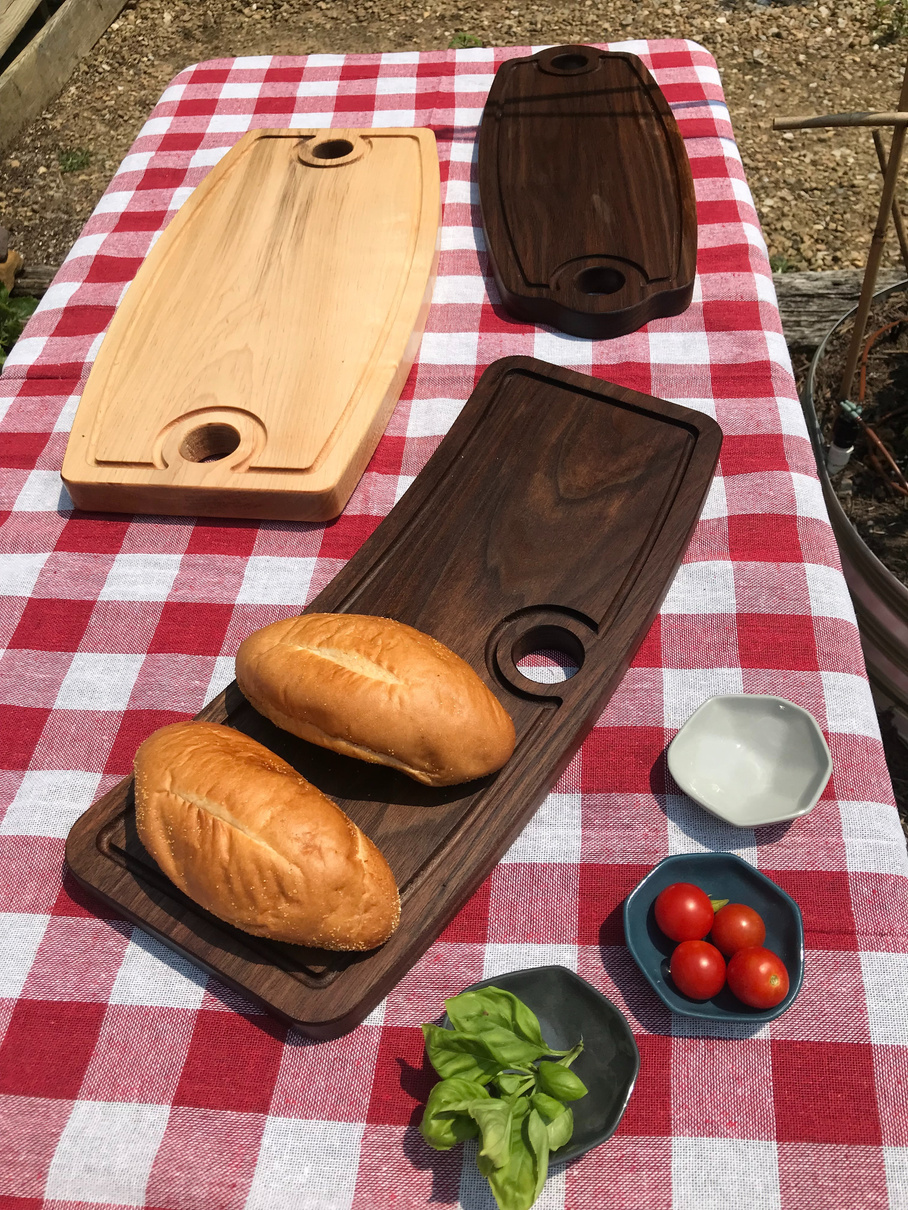Herbs
What we are growing and why
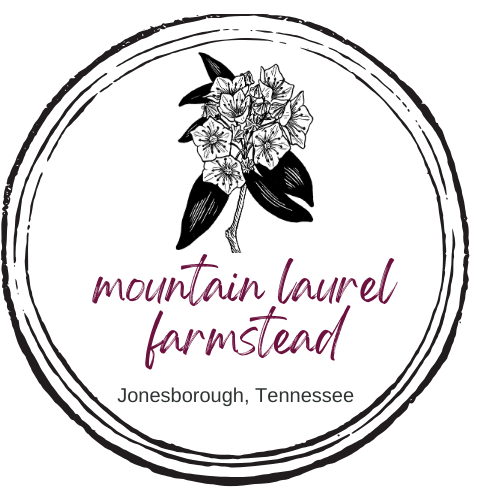
We grow heirloom roses and fruit trees, herbs and pollinator friendly flowers and a little of the bit of the unusual. Why? Because most of these plants have a rich healthy history that we want to share.
We are set up Saturdays at the Jonesborough Farmers Market (May-Oct.)
Hand Grown in East Tennessee
By appointment only to our home farmstead, located only 5 minutes from downtown Jonesborough - contact us: (267)797-6020
ANNUAL- FLOWERS
Bachelor's Button
Mauve Lady
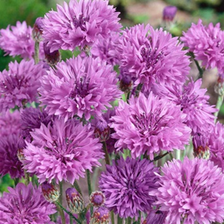
Bachelor's Button Mauve Lady have delicate blooms range from lavender to mauve, atop long and strong stems! The 3- to 3.5-foot annual plants are a perfect choice for pollinator gardens and cut flower operations, as well as meadows, beds, and borders.
Bachelor's Button
Almost Black
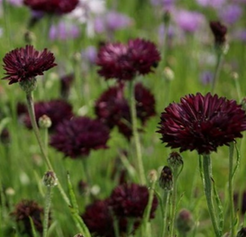
Bachelor's Button Almost Black are deep, plum colored annuals that will add contrast and depth to your garden or patio. Almost Black Cornflowers are perfect for containers and cut flower gardens, but why not add them to your own goth garden! They do well in full sun to partial shade.
Bachelor's Button
Blue Boy
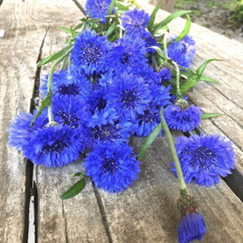
Bachelor's Button Blue Boy is an exquisite annual fragrant, well-doubled, flowers bloom from early summer until frost. Fine for cutting and border display.
Bachelor's Button
Classic Romantic
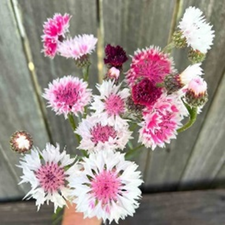
Bachelor's Button Classic Romantic is a soft and romantic mix of pinks, blushes, ivory, and magenta tones Fun Fact: Bachelor's Button flowers were discovered in the tomb of King Tutankhamen, the famous Egyptian pharaoh who died in 1340 BC. The blossoms were woven into an intricate floral collar, a traditional accessory placed on the pharaoh's body during the funeral.
Bachelor's Button
Pinkie
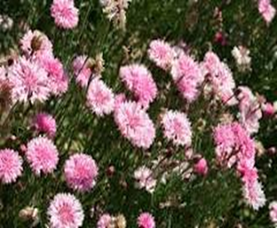
Bachelor's Button Pinkie is a tall, vibrant pink variant of Bachelor Button. The Bachelor Button prefers full sun and well-drained soil. It is a resilient annual flower and can be fall planted in zones 7-10.
Bachelor's Button
Red Boy
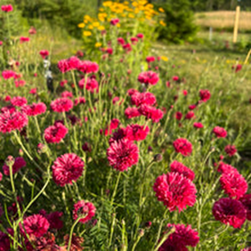
Bachelor's Button Red Boy are low maintenance and grow well in a full sun. 'Red Boy' is a selection from the distinguished gardens of the late Mr. H. Gauthier of Halifax who had grown these beauties for many years. Expect Deep red-wine/rose blooms from early summer to late fall.
Borage
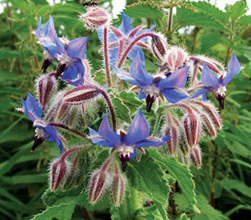
Borage is an herb notable for its vibrant blue- purple flowers and medicinal properties. Both the leaves and flowers of the plant are edible and commonly used as a garnish, dried herb, or vegetable in a variety of drinks and dishes. The leaves are sometimes also ground up and steeped in hot water to brew herbal tea.
White Borage
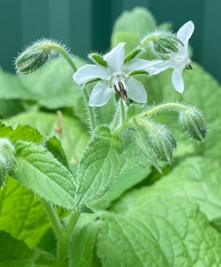
White Borage has slilvery green leaves covered in softly bristled hairs grow on stocky 18” to 36” plants. Young, tender leaves taste like Cucumber and are wonderful in salads, vinegars or soup stock. In midsummer, White Borage produces gorgeous, starry, edible white flowers, irresistible to beneficial insects and humans alike.
Brush Strokes Viola
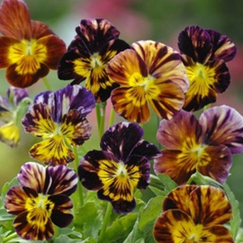
Brush Strokes Viola the petals have the look of a painting, each bloom with its own unique markings. This pansy loves cool weather, and the flowers are edible and delicious, perfect for salads, desserts, garnishes, and more!
Calendula Playtime Mix
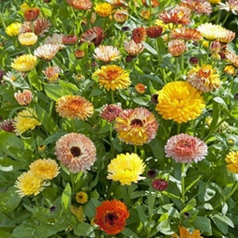
Calendula Playtime Mix is an award-winning annual mix of single and double pot marigolds in both bright and pastel shades. A cheerful display of color in pots and borders, and superb for cutting.
Calendula Sunset Buff
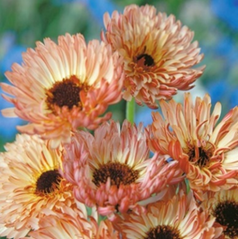
Calendula Sunset Buff has beautiful pastel-colored Marigolds, a softer, subtler look than traditional marigolds. Plant generously around a vegetable garden to make the most of this versatile companion plant, where it will repel pests and draw in beneficial insects. The petals are edible too. Prefers full sun.
Cosmos Apricot
Lemonade
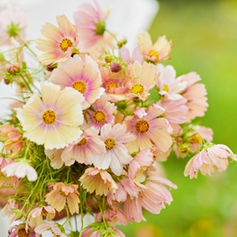
Cosmos Apricot Lemonade is easy to grow annual Super productive and the more you cut them, the more they bloom, adding an airy and delicate element to your garden and bouquets. This variety features long stems covered in single, water colored blooms. The petals start as a soft apricot with a dusty lavender and fade to a buttery yellow Grows 36-42”, Full sun.
Cosmos Rubinato
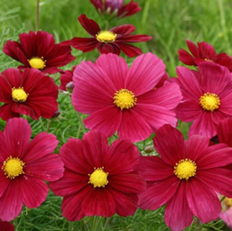
Cosmos Rubinato has deep red semi-double and single blooms open on compact 24-30 inch tall plants. Attractive, rounded petals look beautiful in arrangements and last long in a vase. A prolific bloomer that attracts bees and butterflies.
Cosmos Velouette

Cosmos Velouette pairs beautifully with both red, orange and pink shades! The double-colored flowers keep appearing until late autumn. It is frequently surrounded by merrily buzzing bees and butterflies, making this a wonderful choice if you are interested in the preservation of these insects. The annual summer blooming flower is also an ideal choice for a picking garden.
Historic Florist Mix Pansy
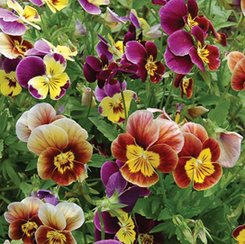
Historic Florist Mix Pansy were called tufted pansies way back in the 1800's, they sport a kaleidoscope of markings (including speckles and marbling!) and color combinations. The flowers are reminiscent of little smiling faces with distinct whiskers. Mixture of many colored blossoms. Will grow in containers, good for ornamental border plantings, Self-seeding biennial plants, grow to 6-8 inches.
Indian Blanket Flower
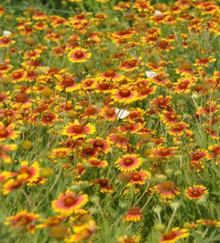
Indian Blanket Flower is an erect annual or short lived perennial in the Asteraceae (daisy) family. The showy bicolored disc flowers have bold colors similar to those utilized by Native Americans in weaving blankets, hence the common name. Another meaning of the common name could be derived from the way the plant grows "blanketing" the ground. The genus name, Gaillardia, is in honor of 18th-century French botanist Gaillard de Charentonneau. The species epithet, pulchella, means "beautiful."
Marigold Colossus
Red Gold
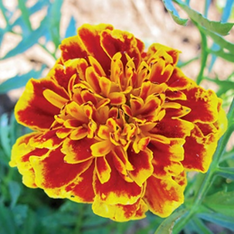
Marigold Colossus Red Gold is a knockout of a marigold, Colossus will dwarf other French varieties with its magnificent, jumbo flowers. Dynamic, bicolor blooms in orange and deep red cover the mounding, 12 inch tall plants. Colossus puts on a vibrant show when massed in a border, or garnish your veggie garden with these colorful, beneficial companion plants
Marigold Court Jester
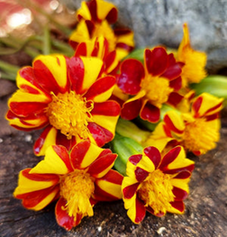
Marigold Court Jester has gorgeous blooms with yellow and reddish-brown stripes are reminiscent of court jester costumes. These fragrant, summer-blooming beauties will add lots of fun to your meadow or garden. The French Marigold is certainly one of the most planted annual flowers in the whole wide world. They have a fabulous reputation as a stand out companion plant for vegetables, such as tomatoes, and are used by cottage gardeners to attract important and much loved pollinators like bees and butterflies.
Marigold Naughty
Marietta

Marigold Naughty Marietta has bright yellow blooms are streaked with mahogany, making this Marigold a gorgeous addition to any flower or vegetable garden. This easy-to-grow annual is perfect for a child’s first garden. Blooms continuously from spring to frost. Attracts a wide range of beneficial insects. Plants grow 12-18 inches tall.
Nasturtium Orchid
Cream
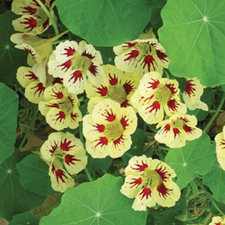
Nasturtium Orchid Cream is a very unique and attractive with flower colors varying from creamy white with paintbrush-like splashes of red, to fully red as they mature. A lovely plant for borders as it has a great mound-like plant shape and fantastic color contrast. Final garden height is 12". They makes a fine companion to vegetables in the garden by attracting bees and repelling destructive pests, particularly around Brassicas. Edible flowers and leaves, like an extra peppery, aromatic arugula. Great in pots, and tolerates some shade. Protect from frost.
Nasturtium Orchid
Flame
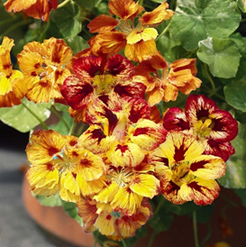
Nasturtium Orchid Flame is blooming merrily by early summer, and really doesn't stop until the weather turns cold. Measuring 2 inches across, they stand out boldly—and like all nasturtiums, they are edible, making lovely embellishments on cakes and salads. It makes a fine companion to vegetables in the garden by attracting bees and repelling destructive pests, useful as a barrier planting around your tomatoes and cucumbers, and some gardeners find it a helpful pest deterrent when ringed around young fruit trees.
Nasturtium Purple
Empire
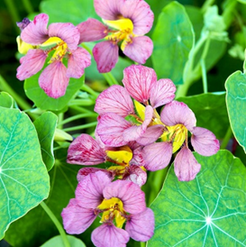
Nasturtium Purple Empire is an eye-catching variety that almost transforms before your eyes, they produce beautiful blooms with veined petals in shades of burgundy and purple. These same blooms difuse to a dusty lilac and rose as the season progresses. This variety offers a manageable trailing length at just 18 to 24 inches long, making them the perfect choice for containers and hanging baskets. Edible blossoms and leaves provide a peppery kick to salads, and are a beautiful garnish on desserts!
Nasturtium Tip Top Rose
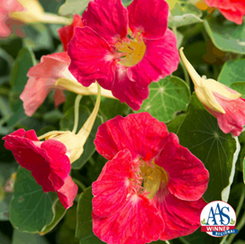
Nasturtium Tip Top Rose has rich rose-colored 3” spicy flowers appearing endlessly from late spring through to the first frost. A particularly floriferous variety, and notably one where the flower color doesn't fade, this award winner is a great way to add fiery tones to a sunny garden spot. Both leaves and flowers are edible, giving you a nonstop supply of spicy additions to salads. Super easy to grow, as it's not fussy about soil or where you may place it. Though drought tolerant, it benefits from a little regular water.
Rococo Mix Pansy Mix
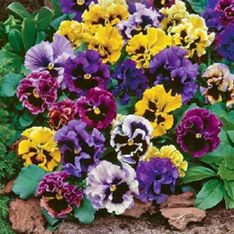
Rococo Mix Pansy Mix is an eye catching variety in a broad mixed range of bright colors from white to yellow to purple with ruffled frilly petal margins. Pansies are popular bedding, flower box and grave plants and set beautiful accents along borders, walkways, beds and even on the balcony. All parts of a pansy flower are edible and while they don't really taste like much, they look so pretty when they're used as a garnish for sweet and savory dishes.
Strawflower King
Silvery Rose
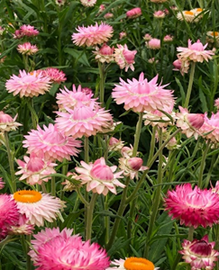
Strawflower King Silvery Rose is perfectly named with a rose tipped white bloom that deepens as it matures growing to 3.5 feet. As always, the long stems are perfect for cutting for use in bouquets, wreaths, etc and will last almost forever once dry. These more subdued blooms add a touch of quiet romance. Expect a few different shades from white to light pink to darker pink. Like all strawflowers, they are virtually indestructible and covered in pollinators! This annual is easy to grow and low maintenance, strawflowers love the heat and grow best in sunny locations with average to dry, sandy soil.
Strawflower King
Sized Red
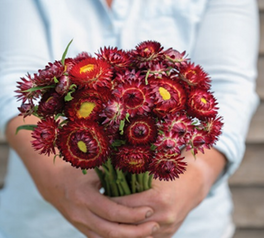
Strawflower King Sized Red are double-petaled everlasting blooms in a stunning shade of scarlet. Tall, sturdy plants reach 36 to 40 inches tall and are smothered in 2.5 inch, papery blooms This everlasting dried flower is highly sought after for design work, crafts, and landscape design! The long stems make it ideal for arranging, flower crowns, and more.
Strawflower Tall
Double Mix
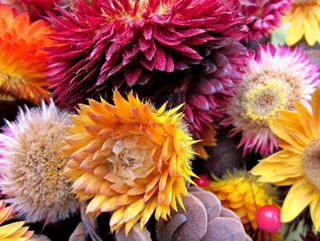
Strawflower Tall Double Mix is a popular everlasting flower that is easy and fun to grow. These come in red, pink, salmon, lemon, white, lilac, and more! This Australian native plant was introduced to England in 1791 and many colors where developed by German horticulturist Herren Ebritsch in the mid-19th century.
Sweet William
Dunetti Dianthu
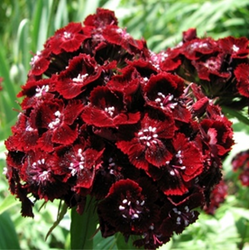
Sweet William Dunetti Dianthus is a compact, upright plant about 18 to 24 inches tall, vigorous and eager to please. Its blooms with a cluster of deep, crimson red flowers atop a long, sturdy stem--perfect for cutting! A beautiful biennial, or short lived perennial, is easy to grow in full sun or partial shade, Sweet William is adaptable to a variety of soil types. Dianthus is a must-have plant for the cottage garden. It attracts bees, butterflies and hummingbirds.
Tiger Laeta Viola
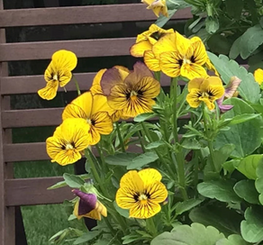
Tiger Laeta Viola are gleaming golden viola adding a ray of sunshine to garden designs. Plants are smothered with golden blooms, and the petals have purple veining, making a gorgeous tiger stripe .Ideal for container planting, especially when grown alongside tulips! Also perfect for beds, borders, and window boxes. Furthermore, violas are edible flowers and make unexpected garnishes and salad ingredients. They can also be candied for a frosted effect and used to decorate cakes or other confections.
Zinnia Aztec
Burgundy Bicolor
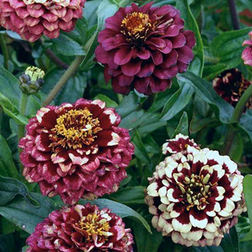
Zinnia Aztec Burgundy Bicolor is an ultra compact and spreading 6-10" tall zinnia that forms carpets of fully double 2 in. burgundy flowers tipped in cream. Plants are highly mildew resistant and exceptionally heavy blooming. They present a continuous display of flowers from early summer until frost.
Zinnia Queen Lime Red
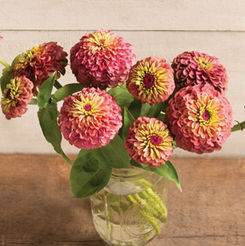
Zinnia Queen Lime Red have 2–3½" blooms have soft burgundy outer petals that gradually lighten to creamy lime centers. A mix of fully double and semi-double flowers with a small percentage of singles. Cut-and-come-again flower, yielding multiple cuts over the season. This plant is a tall, well-branched, bushy zinnia, great for the sunny bed and outstanding in large containers. Expect it to reach 27 to 31 inches high and about 2 feet wide, filled with flowering stems from the first hint of summer weather until the last.
Zinnia Macarenia
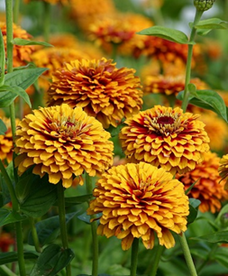
Zinnia Macarenia has varying levels of whorled petals, from almost single rings to full dense glorious blooms. Brilliant yellow and cherry flowers with hot pink centers, often banded with fuchsia pink. So easy to grow and compact, it will be the star of summer bouquets. Height: 24” to 30”.
BIENNUAL- FLOWERS
Black Eyed Susan
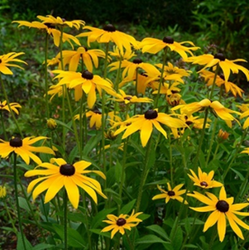
Black Eyed Susan is a hallmark of prairies and meadows, a biennial that blooms and completes its life cycle in its second year with an extravagant floral display. Transplants will bloom the year they are planted, and will easily self-sow onto open soil, creating a more or less consistent stand over time. Exceptionally showy and easy to grow, Black Eyed Susan has a prolonged bloom time that attracts butterflies and other pollinators. The late season seed heads attract finches and other birds.
Hollyhock Crème
De Cassis'
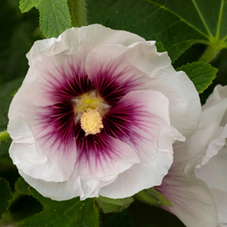
Hollyhock Crème De Cassis' is a knockout. Growing up to 6 feet, each flower stem is arrayed with big (up to 4) blooms in raspberry and white. You'll have the semi-doubles with a fluffy center, and then the singles, which feature a bright yellow center, all on the same plant. This hollyhock also makes a wonderful cut flower. And did you know that all parts of the hollyhock plant are edible? Sprinkle flowers on a salad or soak leaves to make a refreshing skin treatment.
Hollyhock Henry VII Pink
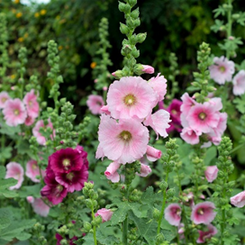
Hollyhock Henry VII Pink, when one thinks of Hollyhocks, Henry The Eighth Pink is probably what comes to mind! Towering stalks reaching an amazing 8 feet high are stacked with large, papery blooms that are excellent for attracting beneficial bees and butterflies to your garden!
Hollyhock Jet Black
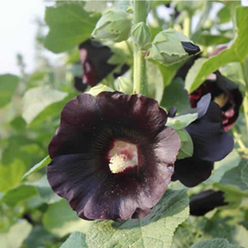
Hollyhock Jet Black is traditional variety is shockingly beautiful with its near-black flowers with just a hint of red. Gorgeous planted out by the old white outhouse or in the back of your flower bed. A must for historical gardens. You'll love this richly colored variety.
Hollyhock Majorette
Champagne
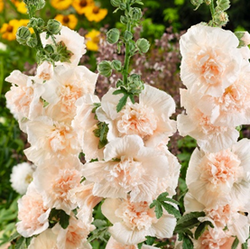
Hollyhock Majorette Champagne will bring delicate, blush-pink frilly blooms to your cutting garden, containers, and arrangements! Sun-loving Champagne Majorette hollyhocks grow to about 30-48 inches tall and bloom spring through summer. This elegant annual is cold- and drought-tolerant, and is so easy to grow and maintain. Champagne majorette hollyhocks are rabbit-resistant and pollinator-friendly, which means hummingbirds and other pollinators will visit often!
Hollyhock Queeny Purple
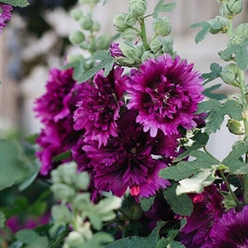
Hollyhock Queeny Purple is a biennial or short-lived perennial boasting sturdy spikes of large, frilly-edged, purple flowers, resembling powder puffs. Blooming from mid to late summer, the striking flowers, up to 4 in. Perfect for small spaces and as cut flowers, its lavish blossoms create a regal display that is sure to captivate. Hollyhock self-seeds freely establishing itself permanently in a garden.
Hollyhock Summer Carnival
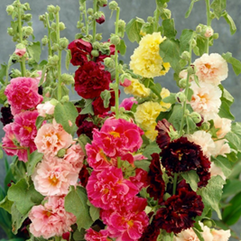
Hollyhock Summer Carnival provides a carnival of color in gardens all summer long. Richly hued, 4 inch double blooms arise all along 4 to 7 feet stalks. Flowers are a mix of colors including crimson, light pink, rose, rosy-red, yellow, and white. Tall stems make it perfect as a cut flower. Flowers will not fade in the summer sun.
PERENNIAL- FLOWERS
Agastache Apricot
Sprite

Agastache Apricot Sprite is a hardy perennial having large tubular blooms of apricot on dwarf flowering spikes. The blue-green foliage finishes the look for a very diverse color combination. The leaves are licorice scented and the tubular blooms are loved by butterflies and hummingbirds.
Agastache Rose Mint
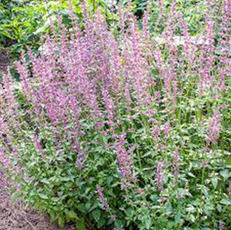
Agastache Rose Mint produces a continual mass of lavender-rose, scented flowers from June to September. It's extremely attractive to bees. For best results grow in free-draining soil in full sun.
Blue Lobelia
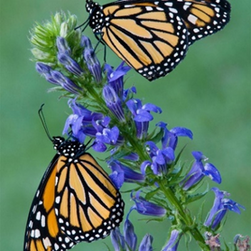
Blue Lobelia is a herbaceous perennial that may grow 3 to 4 feet tall. The leaves are alternate with a toothed margin. Blue flowers first mature in mid-summer and continue into early fall. The flowers are larger than other Lobelias and have stripes on the tube portion. This plant provides late summer bloom to the perennial border, wild garden, native plant garden, woodland garden, or naturalized planting. It is also effective near ponds or streams.
Cardinal Flower

Cardinal Flower is a brilliant scarlet-colored native wildflower that grows in marshes, stream banks and low woods. Its extremely showy blossoms can be recognized at considerable distance. Few native plants have flowers of such intense color as this common herbaceous perennial. The Cardinal flower is a member of the Bluebell Family. It was named after the Flemish botanist, Matthias de L'Obel (1538-1616). The blossoms are delicate, gradually opening from bottom to top on two to four foot spikes. Five petals are united into a two-lipped corolla. The lower lip has three very prominent lobes; the upper lip has two small ones. Five stamens are joined forming a red tube around the style and are topped by bearded anthers which form a mustache-looking brush. Cardinal Flower blooms in late summer (July to September).
Cardoon
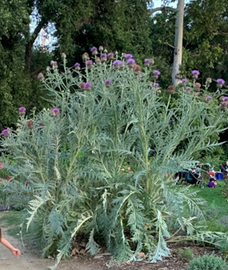
Cardoon typically grows in a clump to 3' tall from which rise flower stalks to 6' tall topped with thistle-like blue-violet flowers. The flowers are quite showy on the plant or when cut for fresh or dried arrangements. A biennial, Cardoon, a close cousin of the artichoke.It has large, prickly, almost dagger-shaped gray-green arching leaves. It is a very ornamental foliage plant that will make a very attractive feature in the flower garden. Cardoon leaf stalks and midribs are tasty when blanched - they look like large celery stalks, can be served steamed or braised and have an artichoke-like flavour. Unopened flower heads can be boiled and eaten like artichokes.
Coreopsis Dyers
Garden Tickseed
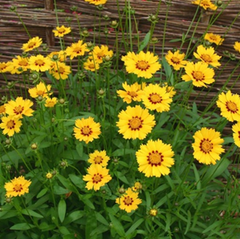
Coreopsis Dyers aka: Plains Coreopsis, Garden Tickseed Annual wildflower native to most of central North America. Slender stems and leaves, topped with abundant yellow and red flowers. Low maintenance and drought tolerant plants. These stunning flowers are a favorite of butterflies, moths, and bees. They also attract finches and other songbirds, who will make a meal of their seeds.
Dianthus Raspberry
Ripple
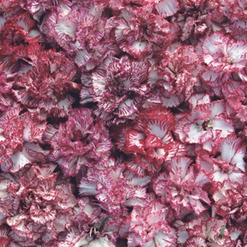
Dianthus Raspberry Ripple Dianthus is a very well-known cut flower, with a long vase life and strong stems. The flowers can smell like cloves. Early sowings will flower all summer long. Dianthus, also known as carnations are hardy perennials but more often grown as hardy annual. Due to the heavy flowers, plants will need some staking or netting.
Echinacea
Purple Coneflower
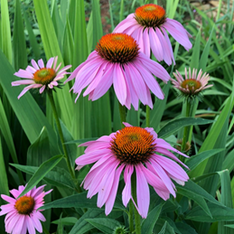
Echinacea is also called purple coneflower, it is one of the most popular herbs worldwide. Native Americans have used it for centuries to treat various ailments. A perennial with 2- 5 feet tall stems, bears single pink or purple flowers, and has a central cone that is usually purple or brown in color. The large cone is actually a seed head with sharp spines that resemble a stiff comb.
Lance Leaf Coreopsis
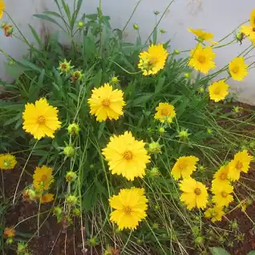
Lance Leaf Coreopsis blooms for weeks on end, creating a fantastic early summer display of golden yellow flowers. Butterflies are regular visitors, and songbirds feed on the ripe seeds in late summer. This wildflower grows in any well-drained soil, and exalts in dry sandy soils. Lanceleaf coreopsis is resistant to deer, drought, heat and humidity. Use this plant in naturalized areas, meadows, native/pollinator gardens or any area where they can spread.
Lemon Bee Balm
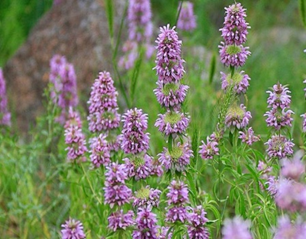
Lemon Bee Balm is striking native wildflower is a pollinator magnet and flavorful culinary and tea herb. The lightly lemony flavor of the leaves makes this an excellent choice as a tea plant or for use in sweet and savory culinary preparations. Although it is an annual, it will readily propagate by seed. If you leave flowers in place, this plant will spread.
Queen Anne's Lace
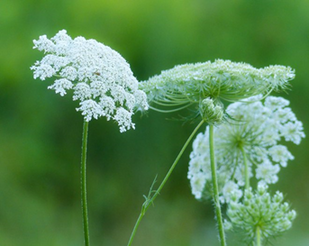
Queen Anne's Lace can reach heights of about 1 to 4 feet high. This wildflower has attractive, fern-like foliage and tall, hairy stems that hold a flattened cluster of tiny white flowers, with a single dark-colored floret just off its center. You can find these biennials in bloom during their second year from spring on into fall. Queen Anne's lace is said to have been named after Queen Anne of England, who was an expert lace maker. Legend has it that when pricked with a needle, a single drop of blood fell from her finger onto the lace, leaving the dark purple floret found in the flower's center. The name wild carrot derived from the plant's past history of use as a substitute for carrots. The fruit of this plant is spiky and curls inward, reminiscent of a bird's nest, which is another of its common names.
Red Bee Balm
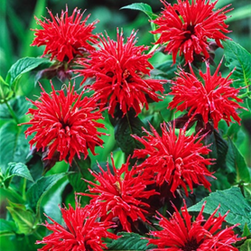
Red Bee Balm is a popular garden perennial, Red Beebalm (Monarda didyma) holds a special place in the midsummer color scheme with its bright scarlet flowers. As the name suggests it is favored by pollinators, and is highly attractive to hummingbirds as well. Native to the Appalachian Mountains, Monarda Didyma grows well in zones 4-7, and does best in a rich soil with plenty of organic matter to help provide moisture during the heat of summer. Other common names include Oswego Tea and Scarlet Beebalm.
Spotted Bee Balm
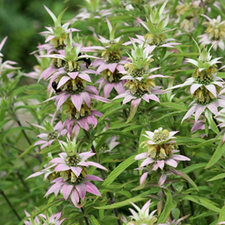
Spotted Bee Balm is best suited to perennial borders, wild gardens, prairies, and meadows. Grows in clumps up to 18-24". tall and 9-12" wide. It has robust, aromatic wildflower that occurs naturally in meadows, coastal dunes, roadsides and dry disturbed areas. It typically blooms late spring through fall, attracting a huge variety of pollinating insects, including bees, wasps and butterflies. When crushed, the leaves emit an oregano-like scent. The leaves and flowers can be brewed into a mild tea that is said to promote relaxation.
Wild Bergamot
Bee Balm
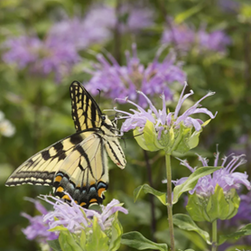
Wild Bergamot Bee Balm can grow 24-48" tall x 24-36" wide. The intriguing blossoms burst forth from their buds into clusters of nectar-rich, tubular flowers held aloft by a ring of showy bracts. True to its name, the plant's purple-pink flowers are magnet for bees and many other pollinators. It is easy to grow, adaptable, and readily spreads to form large swaths. You'll have so many flowers from midsummer into fall that the bees won't mind if you cut a few to jazz up indoor arrangements. Healthy leaves or flowers can be used to make tea. This deer-resistant perennial is native to the states east of the Rocky Mountains, and thrives in all but the hottest, driest regions. It prefers full sun to part shade and tolerates a range of soilsfrom dry to moist. A charming addition to herb gardens, meadow plantings, cottage gardens, or perennial flower beds.
Yarrow Colorado Mix
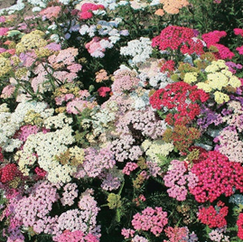
Yarrow Colorado Mix is an easy growing perennial wildflower is a favorite, mid season bloomer with high heat and drought tolerance. A million tiny flowers make up the unique clusters atop sturdy stems that are indicative of Yarrow. An array of flowers in rose, peach, white, fuschia and cream top strong stems with lacy foliage in this Colorado Mix Yarrow. It makes excellent filler for cut fresh or dried arrangements, retaining it's color well for months of post-harvest. Plants can grow up 18- 30".Attracts pollinators, birds and is rabbit and deer resistant.
Yarrow Yellow
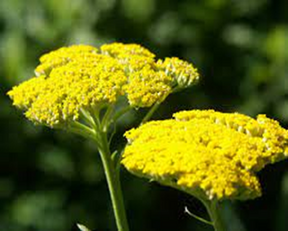
Yarrow Yellow is a flowering perennial often used as a medicinal remedy or hardy and diverse wooly herb protecting other plants. As a member of the daisy family, Yellow Yarrow develops fern-like foliage and canary-yellow flowers providing healing skin benefits as a bright and holistic wildflower crop! Grows 2-4 feet.
ANNUAL- HERBS
Basil Cardinal
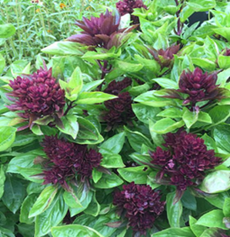
Basil Cardinal had richly colored blooms and robust flavor make it a wonderful dual-purpose basil. With its strong aroma, a little goes a long way in the kitchen. But it's also a striking accent in a mixed container, adding a unique shape, color, and fragrance. Bring its beauty indoors as a fragrant cut flower. Cardinal is the ultimate edible ornamental, offering something for everyone in the sunny garden.
Basil Everleaf
Emerald Tower
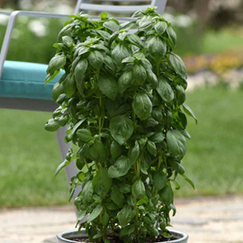
Basil Everleaf Emerald Tower is pretty enough to be the centerpiece of your patio flowerpot, prolific in leaf growth; deep, emerald, glossy green leaves; and forms an herbal tower. This cultivar holds off flower production up to 12 weeks longer than other types of basil, so you don't have to worry about pinching flowers off to keep your basil producing tender leaves.
Basil Genovese
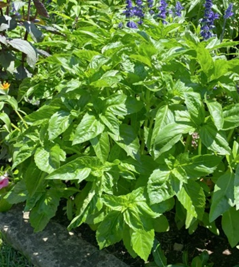
Basil Genovese is an annual herb with medium-sized leaves. The herb has a strong smell and does not become very high. The herb does not bolter early and prefers shelter. This variety is very well suited for pesto.
Basil Holy
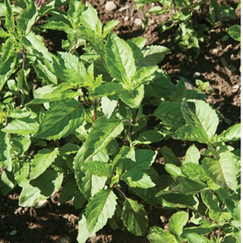
Basil Holy (Ocimum tenuiflorum) isn’t like the sweet basil in your mom’s marinara sauce or the Thai herb you use to flavor a steaming bowl of pho.This green leafy plan, is considered a tonic for the body, mind, and spirit. Different parts of the plant are recommended for treating different conditions.
Basil Lettuce Leaf
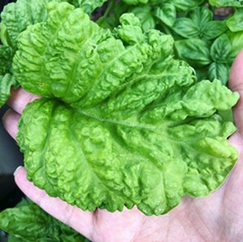
Basil Lettuce Leaf are large in size but pleasantly mild in flavor. This sweet basil is just a bit more subtle than Genovese. It is great for making gallons of pesto, tossing into fragrant salads, and perfect for making delicious “Lettuce Leaf Basil Wraps.” Huge 6-inch leaves are great in size and nutritious, containing vitamin A and minerals such as calcium, magnesium, and potassium!
Basil Lime
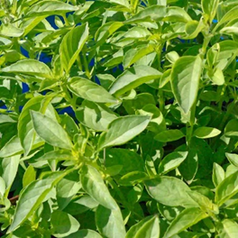
Basil Lime is a rare and hard to find seed variety, Lime basil is sweet and fragrant with a mild citrus taste. The lime scent of the bright green, lance-shaped leaves pair perfectly with lemon basil for a full explosion of tangy fresh flavor. Excellent for flavoring sauces, dressings and desserts.
Basil Persian
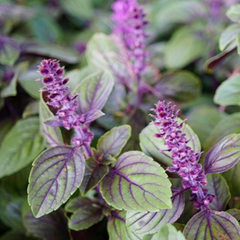
Basil Persian is an ancient herb and staple in Middle Eastern cuisine! It has a fresh, savory, verdant flavor that is reminiscent of licorice and mint, and is meatier than Italian-style basil. Often used fresh in herb salads, or chopped in vegetable, fish, and rice dishes. It also has aroma-therapeutic properties and provide soothing and relief. Persian Basil grows showy purple flushes with lavender flowers that will attract birds, bees, and butterflies in your herb garden or ornamental garden!
Basil Purple Ball
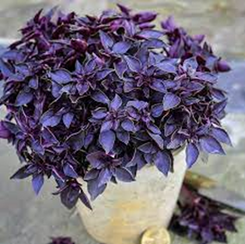
Basil Purple Ball is a beautiful, fragrant and tasty purple foliage makes this basil both gourmet and ornamental. Plants reach just shy of 1 foot tall, with a tidy, round form and plum purple color. Excellent in raised beds, window boxes, and other creative containers as well as in beds and borders.
Basil Sweet
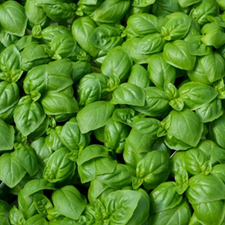
Basil Sweet plays a role in many Mediterranean, and particularly Italian, cuisines. It forms the basis of pesto and adds a distinctive flavor to salads, pasta, pizza, and other dishes. Indonesian, Thai, and Vietnamese cuisines also feature this herb. In the diet, sweet basil can provide vitamins, minerals, and a range of antioxidants. Its essential oil may also have medicinal benefits.
Basil Siam Queen Thai
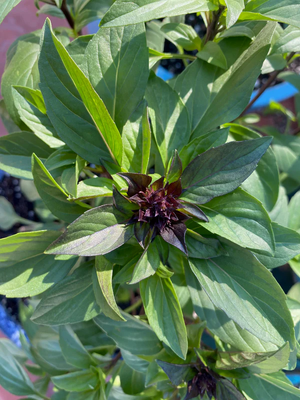
Basil Siam Queen Thai is an attractive basil has a sweet, spicy flavor with a hint of anise. Widely used in Thai and Vietnamese cuisines. Perfect for containers. Easy to grow and highly ornamental.
Basil Spicy Globe
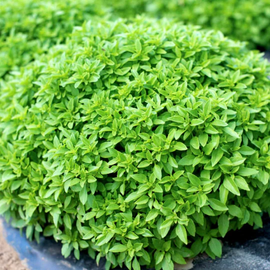
Basil Spicy Globe can be used in place of sweet basil to give a very flavorful kick to your recipe. This variety grows in a globe shape and produces small leaves. Due to the small size, it does wonderfully in containers. The flowers on this variety are delicious and sweet despite the spice of the leaves.
Basil Everleaf Thai Towers
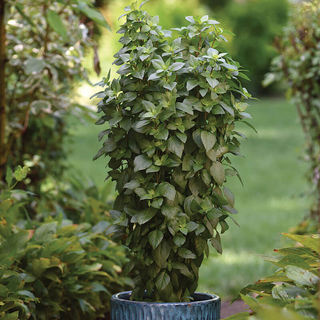
Basil Everleaf Thai Towers is an gorgeous basil plant has masses of green leaves with occasional purple flecks and soft purple stems that will brighten up any vegetable garden or mixed container. Upright columnar plants reach 2-3’ tall. Its aromatic and vibrant licorice flavor complements any dish, especially Thai cuisine. Late-flowering habit means huge harvests of flavorful leaves throughout Summer.
Basil Genovese
Red Freddy
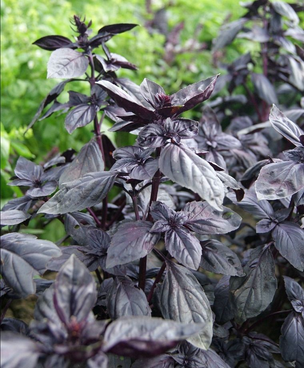
Basil Genovese Red Freddy has a deep purple Basil has the same great Genovese taste we all adore in the classic green version, but with a colorful kick that adds some serious flair to your herb garden or ornamental beds.
Basil Blue Spice
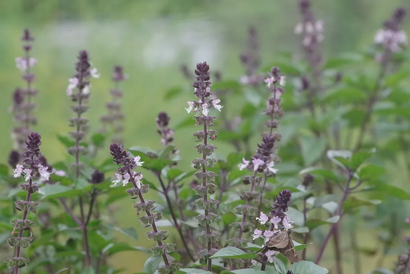
Basil Blue Spice is an vigorous plant with dense spikes of light purple flowers enclosed in showy deep purple bracts, making for an especially fine appearance in pots or in the garden. Heavy fragrance with spicy vanilla overtones that makes a pleasant contribution to both fruit salads and savory dishes. The most fragrant basil. Blue Spice basil can also add flavor to pesto, marinades, and dressings, or it can be muddled into liquors, sparkling beverages, lemonade, and tea.
Basil Cinnamon
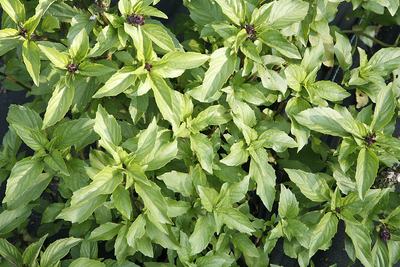
Basil Cinnamon also sometimes called 'Mexican Spice' basil, is a variety that grows eighteen to thirty inches tall and twelve to eighteen inches wide. The cinnamon scented leaves grow up to two inches long. The stems are purple with small purple flowers that are in bloom in the summer. Along with being used in Mexican and Indian dishes, it can be added as an interesting flavor to recipes that call for basil. It can also be used in gardens as a companion plant to repel insect pests.
Chervil
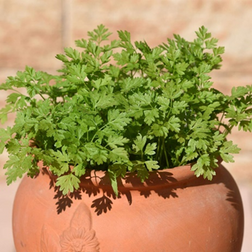
Chervil has an incredibly delicate flavor that is reminiscent of a combination of parsley and tarragon. The bright, light green leaves contain the slightest hint of licorice. Chervil’s lacy leaves are finely cut and light green, as delicate and dainty as their flavor is subtle. However, the herb can be used in cooked dishes if it's added very late in the process. Some of the tried and true uses for chervil include: egg dishes, poultry dishes, salads, soups,. Hard to find in U.S. markets, chervil is an important herb for kitchen gardeners to grow – its special flavor rewards your efforts many times over.
Elephant Dill
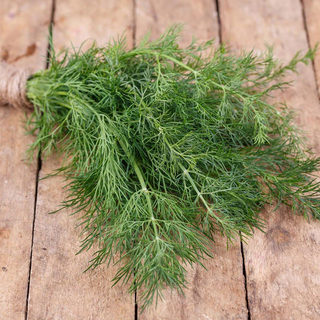
Late-flowering dill for a longer season of leaf cutting, Elephant Dill is delicately flavored and finely leaved. Pleasantly aromatic and productive.
Parsley Curled
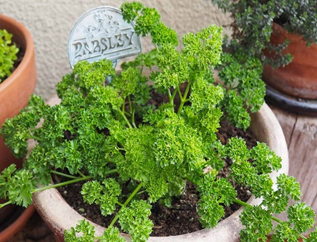
Parsley Curled has a bright, herbaceous, grassy, green, chlorophyll flavor that adds a lot in the way of freshness to dishes. Parsley is used in stocks and soups, especially the stems. Curly parsley is a mild herb and an excellent accompaniment to lighter dishes, such as fish, chicken, eggs, or vegetables.
Parsley Italian
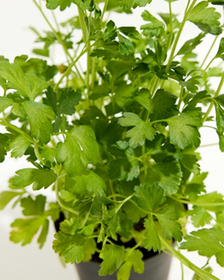
Parsley Italian often called flat leaf parsley is considered the best one to use in cooking since it is felt by some to have a stronger flavor. Parsley is a biennial that will grow leaves the first season and flower and make seeds the next. Can be used either fresh or dried. Plant in full sun. In the south parsley can be fall planted where it will grow leaves during the winter months then flower and make seed in the late spring. Parsley is a host plant for the swallowtail butterfly larvae and finches love to eat the seed. Height is 18 to 24″ tall and wide.
Safflower
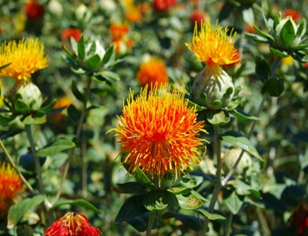
Safflower is an annual plant growing to about 3 feet, that resembles a thistle plant. The main difference between the thistle plant and safflower is the flower color. Since this plant does have sharp thorns on it, plant it strategically. Planting them along a border is great as it will deter rabbits, deer, and other animals from eating your other garden plants.Safflower is an edible plant. It is a culinary herb. Use the tender shoots in salads and raw dishes. The seeds have a slightly bitter taste. Eat them raw or roasted.
Summer Savory
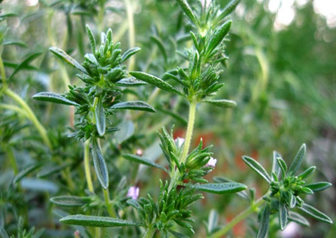
Summer Savory offers is an annual that is not only a very fast-growing plant, but it is super easy to grow. Summer savory can reach heights of about 12 to 18 inches and span up to 30 inches wide. It thrives in full sun (6 to 8 hours of direct sunlight) and in rich, moist, well-drained soil. It is a delicious, spicy, pungent, herby flavor and aroma to a vast repertoire of dishes including meat, fish, mushroom, bean, sauces and more. Used fresh, your summer cuisine will shine with the complex taste of the leaves and tender stems. The bees absolutely adore Summer Savory’s later-season blooms, and, if allowed, the plants willingly re-seed.
PERENNIAL- HERBS
Chamomile
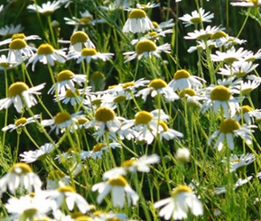
Chamomile is an herb that belongs to the Asteraceae (daisy or sunflower) plant family and is grown around the world. It forms a daisy like flower with small white petals, a yellow center, and a thin stem, and can grow nearly 3 feet high. Chamomile has been used as a traditional medicine for thousands of years to calm anxiety and settle stomachs.
Chives
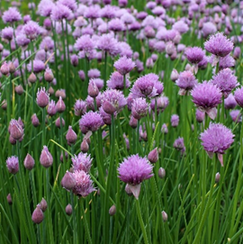
Chives are a perennial herb botanically classified as Allium schoenoprasum, and they are the smallest growing species in the onion family, alongside garlic, onions, scallions, shallots, and leeks. .Chives are known as one of the four Fines Herbs, a classic French herb blend that also contains tarragon, chervil, and parsley.
Creeping Thyme
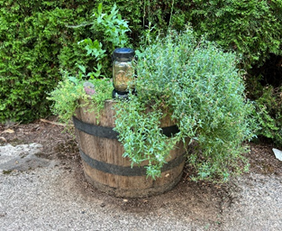
Creeping Thyme, this miniature thyme is fragrant, pretty, and charming. It's also incredibly useful. Only 2"-3" tall, you can walk on it (releasing its lemony aroma), tuck it between pavers in a garden path, use it as a tidy border or fill in a flower bed. It grows quickly but isn't pushy, delivers texture, fragrance, and flowers, is great for cooking, and requires almost no care.
French Thyme
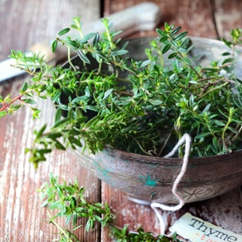
French Thyme is a popular herb used to add flavor in poultry and fishes dishes as well as salads, stews, sauces and pickles! This Thyme variety produces very aromatic blue-green leaves with pale lavender flowers that will add a pop of beautiful color to any garden or windowsill.
Garlic Chives
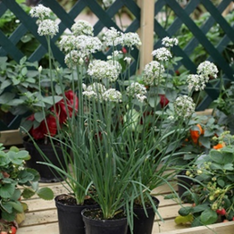
Garlic Chives also called Chinese chives, have slim flat grass-like leaves that taste like a perfect combination of sweet garlic and chives. Just snip them over salads, fresh vegetables, or any savory dish to add a subtle and delicious garlic accent without any of the fuss. The green strappy leaves form neat mounding plants with pretty white edible blossoms. This permanent perennial herb is a joy to have ready at hand a gardening cook’s secret!
Greek Oregano
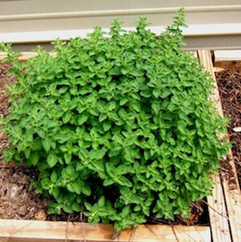
Greek Oregano is a hardy perennial herb that has the potential to spread. The dark green leaves are round in shape and have a gritty texture and light fuzz. The flowers, like many of the culinary oreganos, are small and white. Delivers a delightful, spicy flavor that compliments meats, egg dishes, and salad dressings. Some use it to ease symptoms related to indigestion, cough and regulate menstruation.
Hyssop Anise
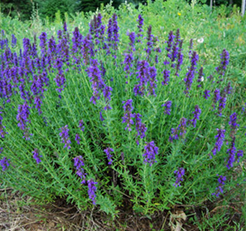
Hyssop Anise s a perennial plant from the mint family. Also known as agastache, lavender hyssop, and licorice mint, this heirloom is loved by hummingbirds, bees, and butterflies. With a minty, anise/licorice flavor, it is as useful in the kitchen as it is beautiful. The leaves and flowers make a refreshing, fruity tea, and can be added to salads. The lavender-blue flower spikes are lovely in fresh floral arrangements or dried bouquets.
Italian Oregano
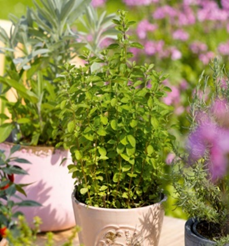
Italian Oregano is one of the most versatile and delicious herbs for making sauces and soups in the kitchen. Italian oregano is a fragrant and attractive plant in the garden or containers. It thrives as a perennial herb in zones 5 through 10, so you can enjoy fresh leaves year after year. Italian oregano leaves are ready for harvesting fresh and drying as soon as the plant's pretty stems are at least 4 inches long; cut the stem to leave an inch or so for re-growing. Italian oregano typically reaches 12 to 18 inches high and spreads nearly as wide like a groundcover. If stems are left to grow longer, tiny pink flowers will emerge late in summer. However, it is best to harvest Italian oregano leaves before the flowers appear for best flavor. Harvest early in the morning when possible.
English Lavender
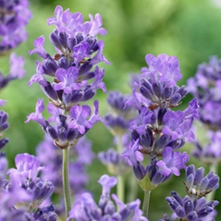
Lavender Munstead s an English Lavender that has fragrant, cool lavender-blue spikes and gray-green, mounded foliage. You can tuck this lavender into your herb garden, but we love it planted with other colorful perennials in borders, planted in a massive swath where it can sway in the breeze, or set in a pot on the patio where you can enjoy its pleasant scent. Grows 12-18" tall, excellent in fresh or dried bouquets.
Lemon Balm
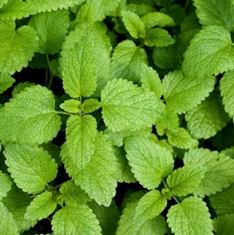
Lemon Balm is a perennial herb, which is part of the mint family. This easy to grow herb is known for its sweet lemon-mint scent. Flavorful leaves are used to brew tea, season fish, and flavor salads. Stems can be used in bouquets of summer flowers. Lemon balm is also considered a calming herb. It is said to help reduce anxiety, restlessness, and sleep problems. Plants looks best when they are cut back periodically. During the summer, small white flowers full of nectar appear which attract bees.
Lemon Grass
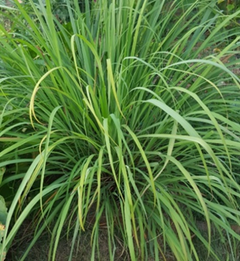
Lemon Grass s a tropical attractive clump-forming grass that grows 2-4 ' upright and slightly arching. It has light-green foliage that is strongly lemon-scented. A tender perennial that can be over-wintered in a sunny window. Uses: The dried leaves can be brewed into a tea, either alone or as a flavoring in other teas, imparting a flavor reminiscent of lemon juice but with a mild sweetness without significant sourness or tartness. Frequently used in India and Southern Asian cuisine. Lemongrass contains citronella, a natural oil that repels mosquitoes. Plant multiples in containers for maximum benefit on porches, patios, gazeboes etc.
Marjoram
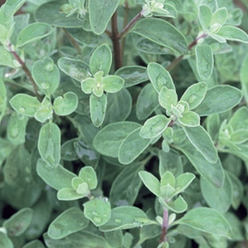
Marjoram is related to oregano, has an earthy flavor with piney and citrus notes. This savory and subtle spice is best added at the end of cooking, as its subtle flavor can dissipate during cooking. It is a wonderful addition to poultry, fish. meat, veal, eggs, and a variety of vegetables. is a perennial herb in the mint family. Native to the Mediterranean and parts of Asia and Africa, some ancient civilizations viewed the herb as a symbol of happiness. In Greek mythology, Aphrodite, the goddess of love, grew marjoram.
Mint Corsican
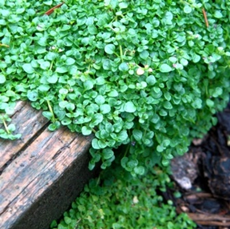
Mint Corsican is the smallest member of the mint family, also known as mini mint. This diminutive mint creeps along, hugging the ground with its deeply scented leaves and tiny purple flowers. The leaves are not as palatable like peppermint but release a more intense scent and are used as the flavoring of creme de mint. It likes a moist, dappled light location and can be used in containers or as a filler around stepping stones. Corsican Mint is grown as an annual. It will often self-seed in colder zones. Spreads well even during its first year.
Oyster Leaf
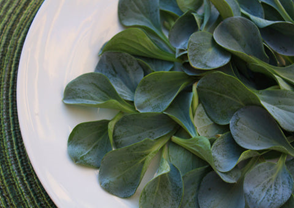
Oyster Leaf also known as sea bluebells. The fleshy leaves of this low-growing shore plant are rich in flavor, which is comparable to oysters, anchovies, mushrooms, and borage. The perennial plant flowers initially reddish and changes its blossom color to light blue in early summer. It is very suitable for planting in rock gardens as it requires no special substrate. Gorgeous, light grey leaf with an amazing, authentic Oyster flavor. Garnish seafood plates or add fresh flavor to salads.
Peppermint

Peppermint iced tea, hot tea, on lamb-just to name a few common uses of peppermint. Perennial in zones 4-9. Mint is an herb that grows well in containers, so you can keep it under control by putting it in at least a 12- to 16-inch-wide pot. If you want to add the plant to a garden bed, first sink a plain, lightweight plastic container with the bottom removed into the soil so the rim is barely above ground level.
Rosemary Officinalis
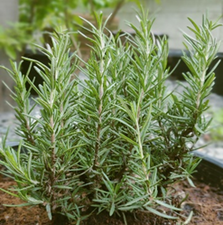
Rosemary Officinalis a beloved garden herb both for its ability to flavor culinary dishes and for its delightful aroma. Well formed bushes grow 16" - 18" inches tall with evergreen blue-green sprig type branches with stiff slender leaf needles. Thomas Jefferson noted Rosemary among 14 other herbs for his Monticello garden in 1794. It has long been valued as a culinary herb in soups, sauces, and vegetable and meat dishes; for its medicinal uses; and for its lasting aromatic fragrance.
Sage
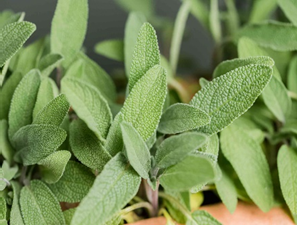
Sage is a perennial plant that grows about2 feet tall, it is a staple herb in various cuisines around the world. It contains antioxidants, packs a healthy dose of vitamins and minerals. Sage is a natural cleaning agent, pesticide, and ritual object in spiritual sage burning or smudging. Its soft-colored foliage and profusion of lovely edible purple-blue flower spikes blend beautifully into any herb garden. The flavor of sage tea is just as you would expect: cozy and pine-forward! Add a hint of sweetener and lemon to round out the flavors, and it’s positively delicious.
Spearmint
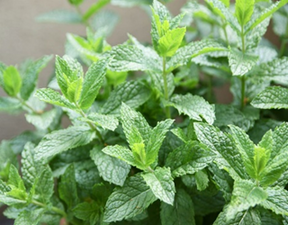
Spearmint teas can be uses medicinally for headaches, indigestion and to help promote sleep. Mint is also an excellent culinary addition. As a general rule, mint family plants root vigorously when allowed to grow freely and can be invasive. Grow them in containers to keep them in check. Mint plants (are very hardy perennials that are simple to identify not just because of their fresh and spicy scent, but because all members of the mint genus have opposite leaves and square stems. Its small white or purple summer-blooming flowers attract bees, butterflies, and other pollinators.
Tarragon
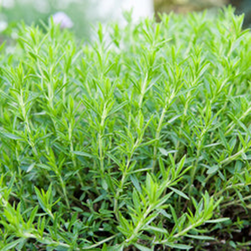
Tarragon is a leafy green herb that is highly aromatic with a subtle licorice flavor. It adds a fresh, spring taste and a bit of elegance to a variety of recipes, including eggs, salad dressings, sauces, and fish and chicken dishes, and is commonly used in French cooking. The plants should grow to around 2 or 3 feet in height. Tarragon is a good companion to most vegetables in the garden. Historically, Ancient Greeks chewed Tarragon to numb the mouth to relieve toothaches. The leaves contain a compound known as eugenol, a natural anesthetic with anti-bacterial, anti-inflammatory, and antiseptic properties. The French also steep the leaves into a tea to induce sleep and to treat insomnia.
Winter Thyme
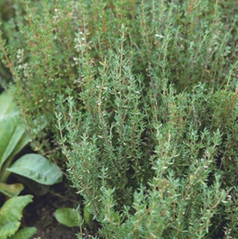
Winter Thyme is a low-growing woody perennial produces 8 to 12-inch mounds of fragrant leaves that are frequently used to season meat, sauces, and dressings. In addition to culinary use, thyme is traditionally used in herbal medicine to soothe sore throats and reduce inflammation of airways. The delicate, purple flowers are also attractive to bees. Thyme is also perfect for containers, either alone or in combination with plants that won't shade it out.
VEGETABLES
Artichoke
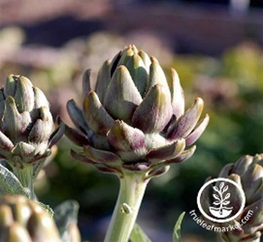
Artichoke is a thistle-like plant grown for the edible blossom bud. It is one of only a few vegetable plants grown in North America as a perennial, with new growth arising from the roots annually.
Kale Thousandhead
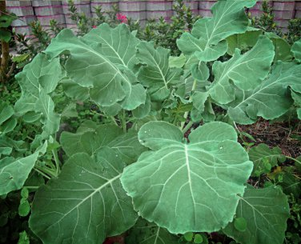
Kale 'Thousand Head' is a particularly winter hardy kale that resembles more a collard green. If left to grow it will reach a height of five feet. The origin of this heirloom crop is from England and its appearance suggests that the crop could be one of the first domesticants of wild kale. Thousand head is named so, because it branches more than other kales. The many branches and growing points mean that it produces more leaves than other kales. It is very easy to grow, unlike other brassicas it will tolerate poor soil conditions and is rarely troubled by those dreaded enemies of the cabbage family. The leaves grow large and abundant; they taste like very tender collard greens. For the ultimate crop, and possible 3-foot leaves, grow in full sun in a soil that was enriched with compost or manure. Mature plants survive to 10F or below and some treat it as a perennial.
Onion Evergreen
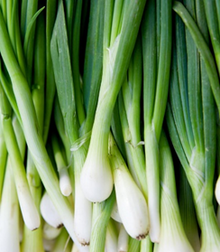
Onion Evergreen consistently produces tender, white-fleshed, mild stalks that are a wonderful addition to stir-fry, salads, salsas, soups and Asian recipes. Bunching onions, sometimes called scallions, are a special type of green onion that do not form bulbs. Evergreen's slim 12-to 14-in. stalks never form a bulb. This beloved heirloom variety is cold hardy and disease resistant. .
Onion Ishikura
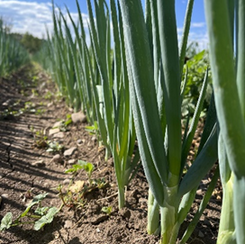
Onion Ishikura a uniform and flavorful bunching onion, it is a popular and traditional Japanese variety for sukiyaki, soup, and salads. Ishikura reaches enormous proportions 2 feet tall and 1inch across, while remaining tender and scallion-like, never forming a bulb. A perfect heat- and cold-tolerant green that is a go-to choice to grow alongside Asian greens in the cool season
Red Orach
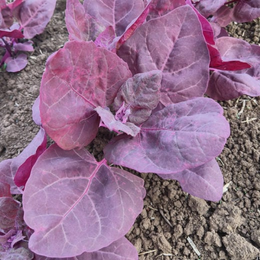
Grown as part of an edible landscaping plan, this gorgeous and mild-tasting green can be eaten raw or cooked as an alternative to spinach. Orach is sometimes called mountain spinach and is a native European green that has been eaten for millennia. Like spinach, it also makes a good addition to a hearty pot of soup. The plants start slow but then grow quickly up to 6’ tall. You can harvest bunches when plants are 18” or smaller, then pluck individual leaves for salad mix. If you let orach go to seed, it will conveniently volunteer intermittently around the garden. Saute Orach's vibrant magenta leaves with butter and garlic, liven up soups and pasta dishes, or brighten salads
Pepper Aji Crista
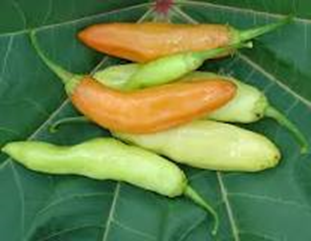
Pepper Aji Cristal is slender 4-inch pepper transforms from green to yellow and finally a pale red, and the heat intensifies as the fruit reaches maturity. This crispy fleshed pepper clocks in at about 30,000 Scoville Heat Units, which is six times hotter than a jalapeño. This is an all-around versatile pepper that can be used fresh, for pickling, hot sauce, salsas, soups and dried and kept longer for seasoning.
Pepper Ashe
County Pimento
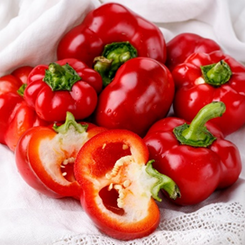
Pepper Ashe County Pimento is a very prolific sweet red pepper. Because this variety has been cultivated in the mountains of Western North Carolina, it is fairly cold hardy for a member of the Solanaceae family, producing early and steady until well after frost. About 3-4" in diameter with a lovely thick flesh, these are great raw, roasted, and/or canned. The best for pimento cheese!
Pepper Corona
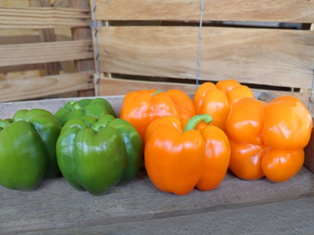
Pepper Corona in 65 days green, 85 orange ripe. Top-notch orange sweet bell peppers. Blocky, uniform deep orange fruit are 3½” wide with 3-4 lobes that are flavorful and sweet and win taste tests over orange supermarket peppers any day. Plants are vigorous and productive, reaching 4’ tall, so the plants benefit from staking.
Pepper Golden Marconi
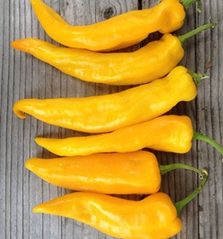
Pepper Golden Marconi is a classic Italian heirloom that grows incredibly long and is known to be one of the sweetest peppers out there, with zero heat and a plethora of flavors to taste! These pepper plants grow around 3 ft. tall and produce these elongated pods that stretch between 6-10" long and 2-1/2" wide! You may want to stake your plant for additional support if the peppers start to weigh it down. Marconi Golden peppers will mature from light green to golden yellow, and they will stay sweet throughout the ripening process.If you want a gentle, fruity sweetness and crunchy texture in your meals, then the Marconi Golden pepper is for you. This pepper is ideal for roasting, but it can also be used to fry, stuff, eat fresh, and add to salads.
Pepper Marconi
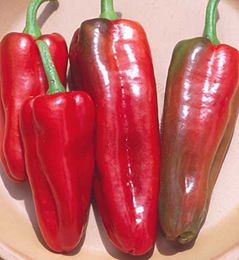
Pepper Marconi is one of the biggest Italian heirloom type sweet peppers, with a long profile and a slightly lobed end, yielding to 7 inches. Peppers ripen from green to red and are sweetest when red. They are great in all kinds of cooked dishes, especially grilled or roasted for sandwiches or alone.
Pepper Pablano
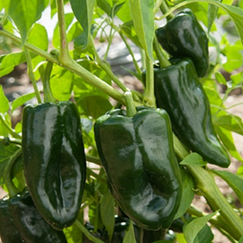
Pepper Pablano is one of the most popular chilis in Mexico! 3- to 6-inch heart-shaped fruit is usually of gentle heat, at around 2000 Scovilles. Its is the classic pepper for chili rellenos. Poblano peppers can also be roasted and used in salads, salsas, or as a topping for tacos or other dishes. Dried, the fruit turns a rich dark red-brown and may be ground into an authentic red chili powder. Plants reach 2 feet or so.
Pepper Sweet Banana
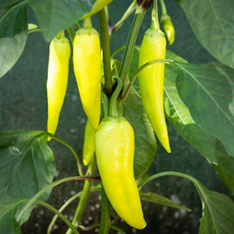
Pepper Sweet Banana is a favorite in the home garden, Sweet Banana Sweet Pepper produces elongated, 6-in. fruits that start yellow and turn scarlet red when fully ripe. The sweet, mild, waxy, thin-walled peppers are delightful in salads and for fresh eating, and they are exquisitely pungent when pickled.
Pepper Datil
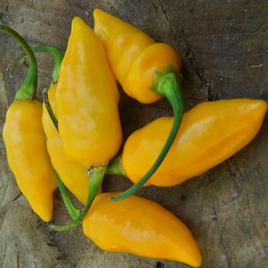
The Datil pepper was first brought to St. Augustine, Florida by Minorcans in 1763 from Menorca in the Balearic Islands off the coast of Spain. The beautiful yellow fruits grow from 1-4 inches in length and are lantern shaped. They have the heat close to a Habanero but are sweeter and tangier. The plants will get up to 4 feet tall and produce an abundant amount of peppers. They are a culinary favorite to cook with and used for spice mixes, marinades and sauces for chicken, beef and seafood dishes.
Blue Hubbard Winter Squash
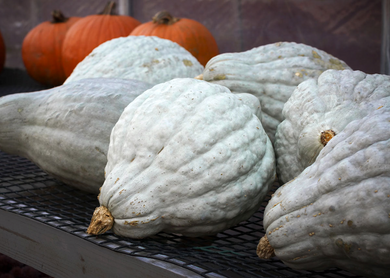
Vigorous heirloom winter squash. Average size of 15 pounds but can grow to as large as 30. Blue-gray outer skin with fine textured orange sweet flesh. A classic baked winter squash. Can be stored for months.
Golden Hubbard Squash
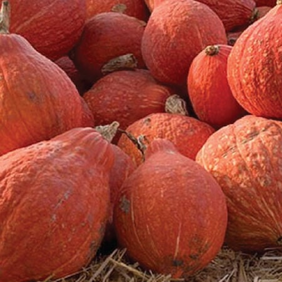
Heirloom winter squash from 1898 that grows to an average of 12 pounds. A great for eating fresh and storing. Very sweet and find grained flesh is great for baking, roasting and pies.
Burpee's Butterbush Squash
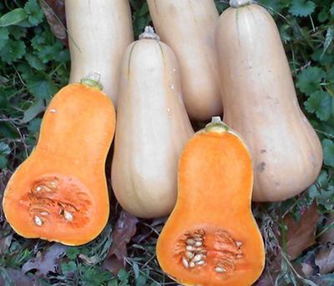
Vigorous heirloom winter squash. Average size of 15 pounds but can grow to as large as 30. Blue-gray outer skin with fine textured orange sweet flesh. A classic baked winter squash. Can be stored for months.
Waltham Butternut Squash
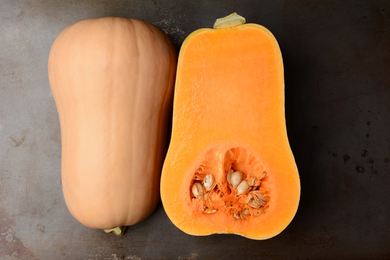
One of the most popular butternut squash. Waltham is more uniform in shape and size, with fewer crooknecks. This butternut has an excellent interior texture and color and nutty flavor. Typically grows 8"x4" and can weigh up to 6 lbs with high yields.
TOMATOES
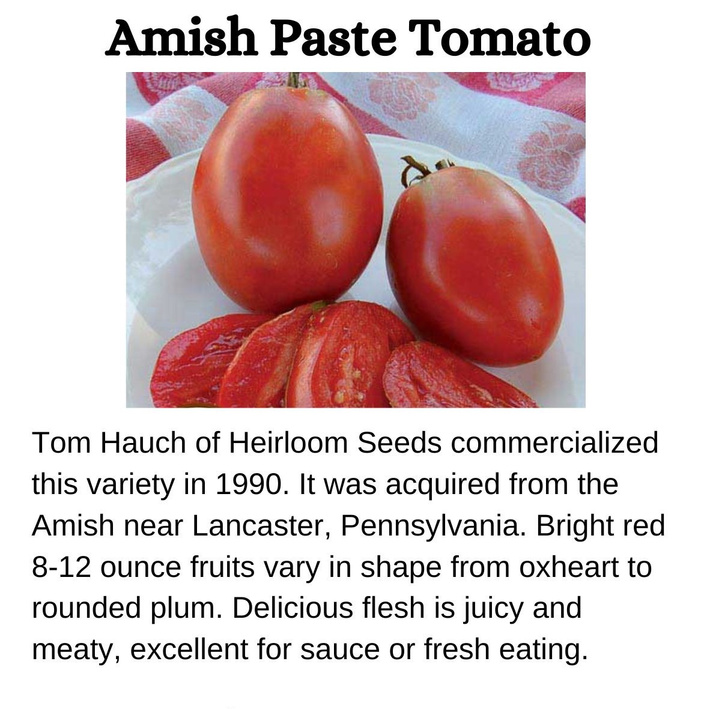
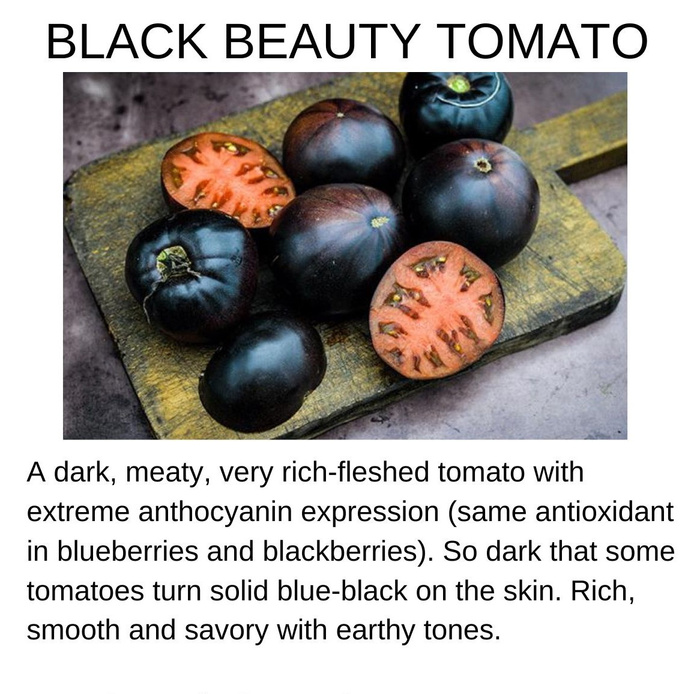
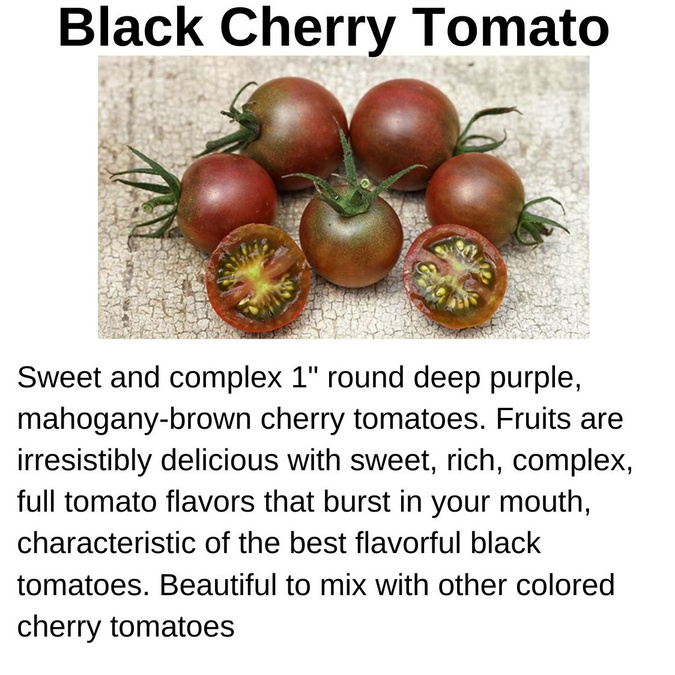
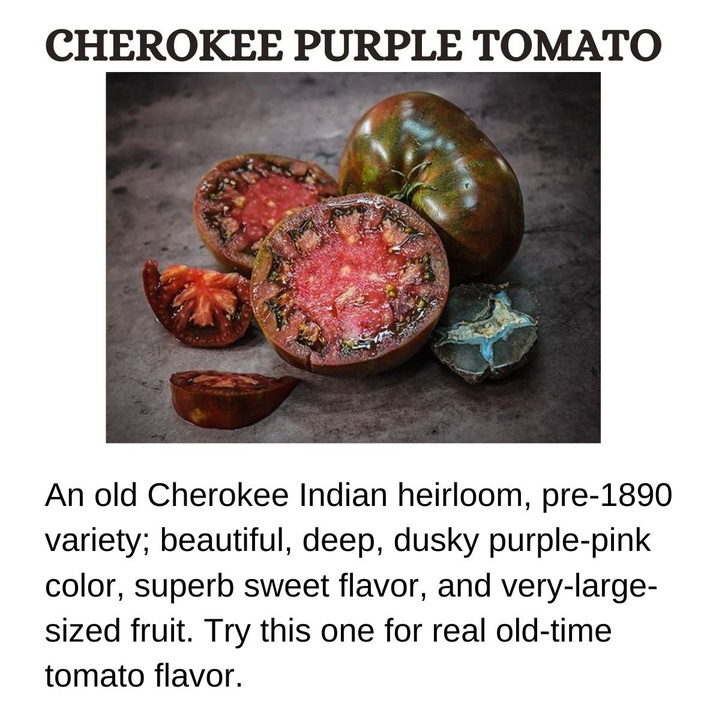
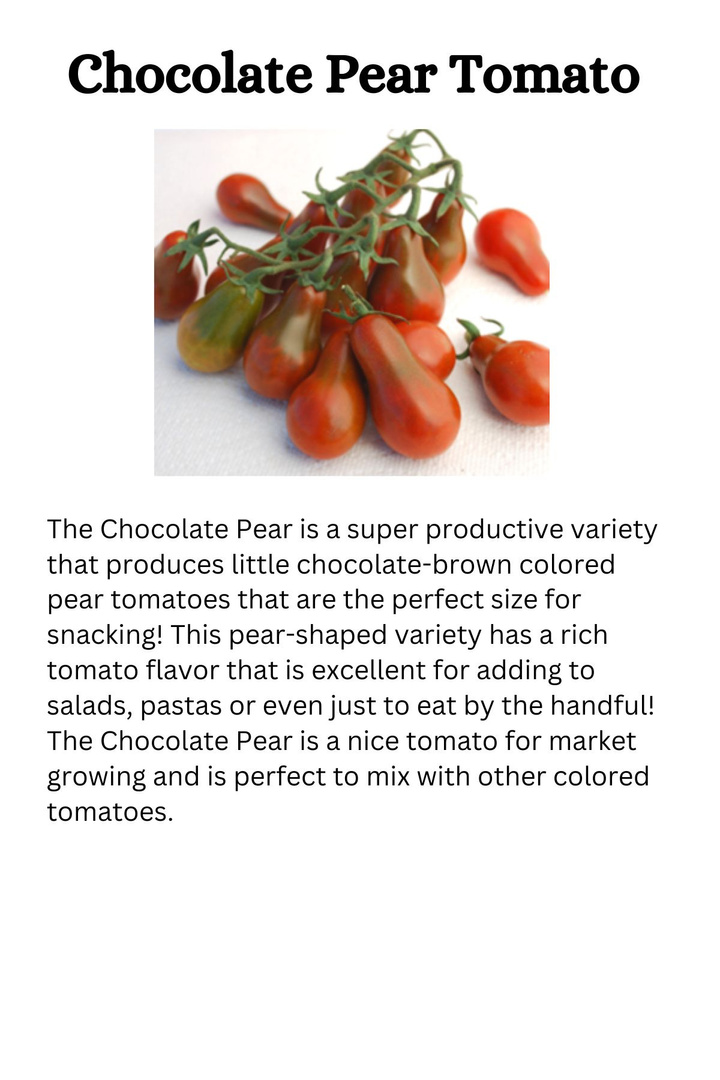
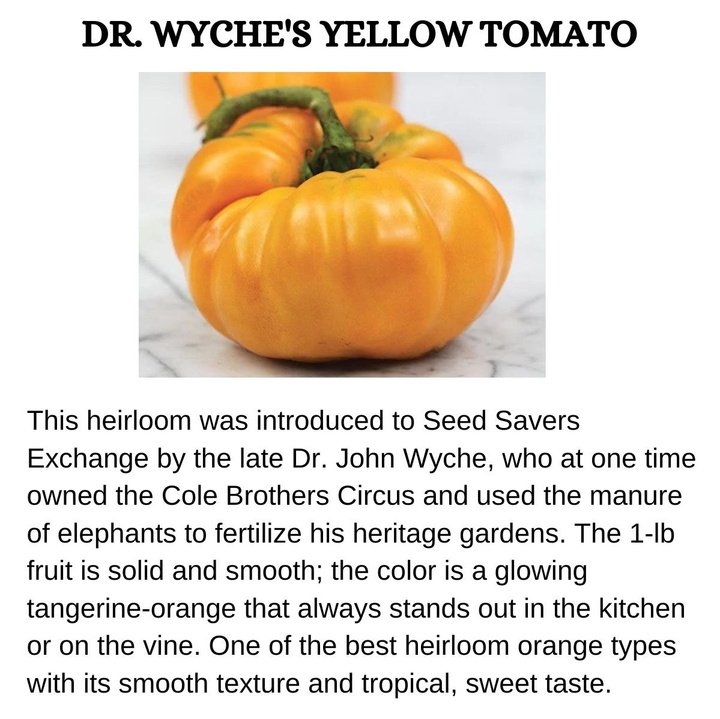
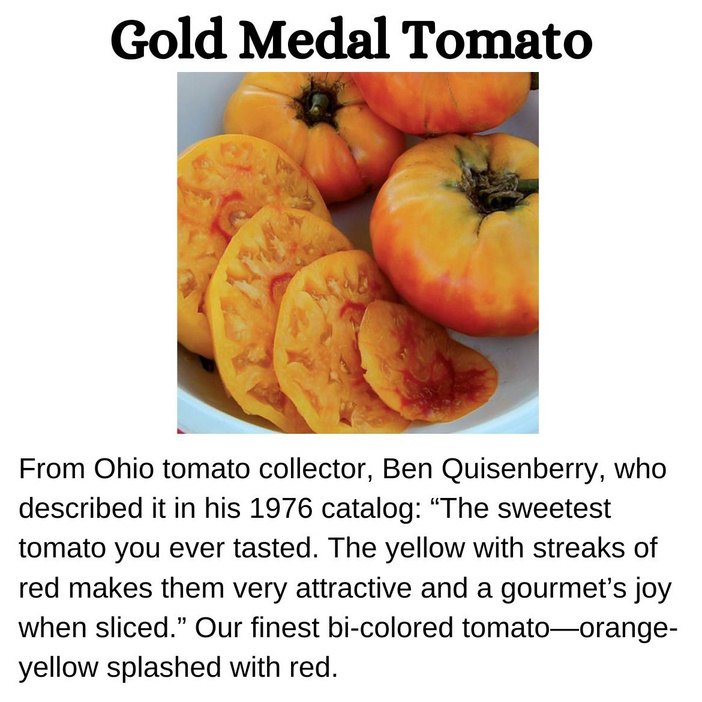
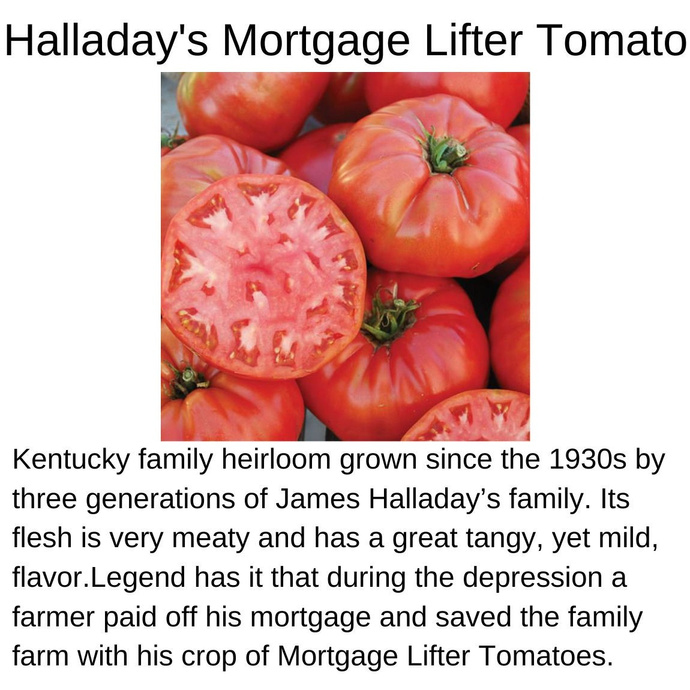
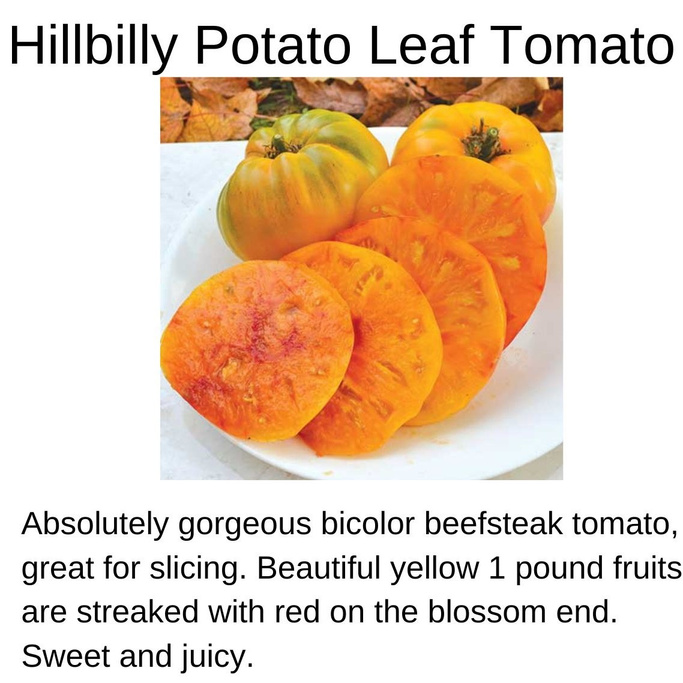
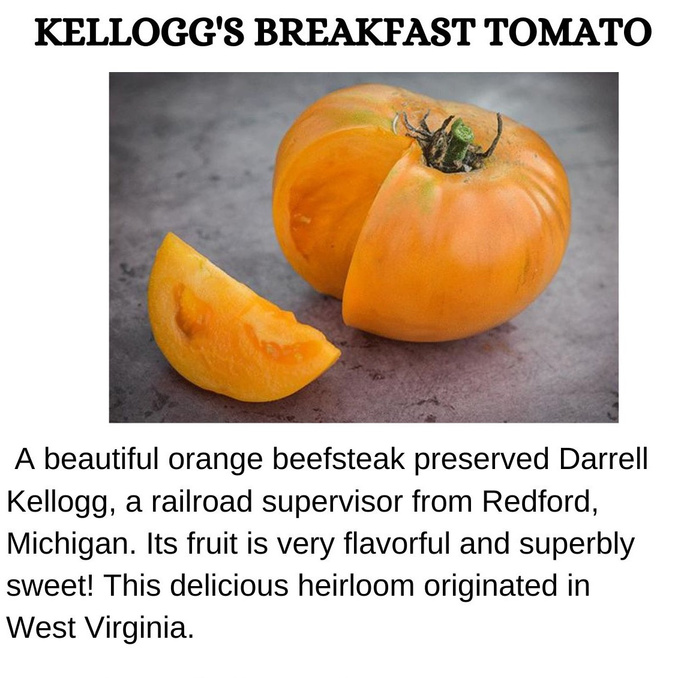
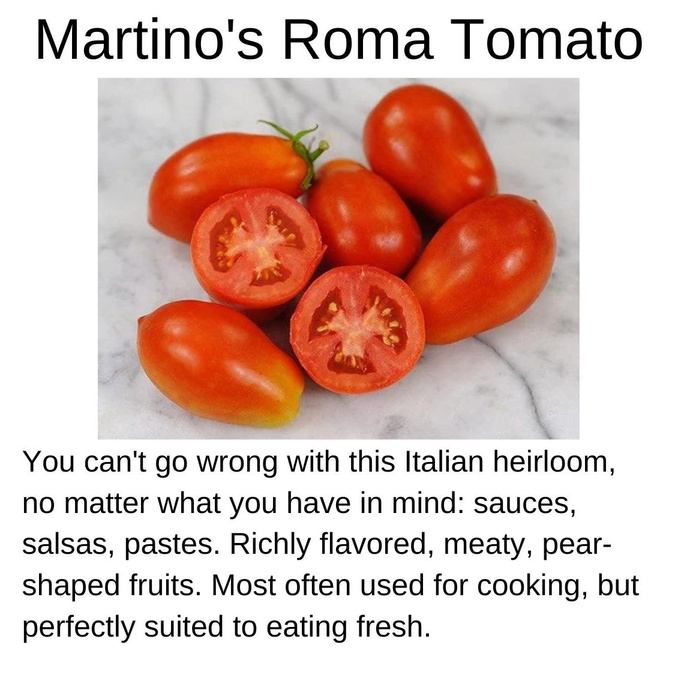
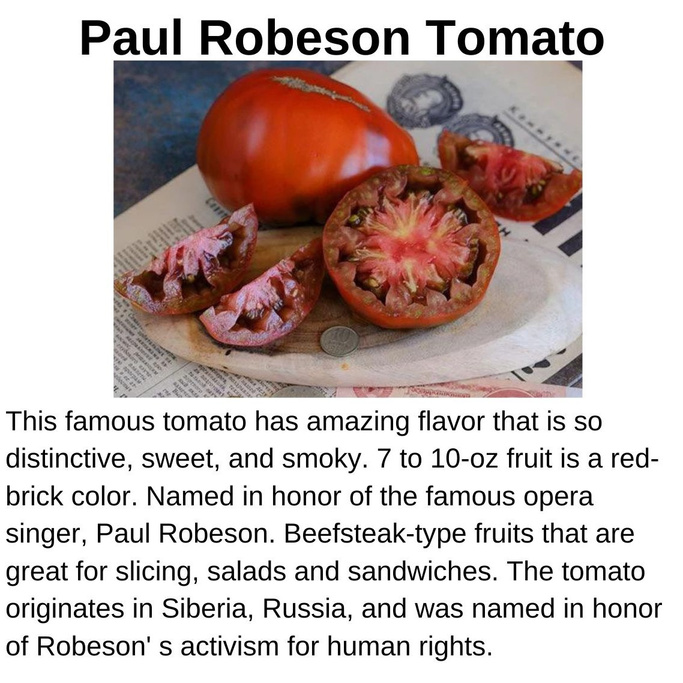
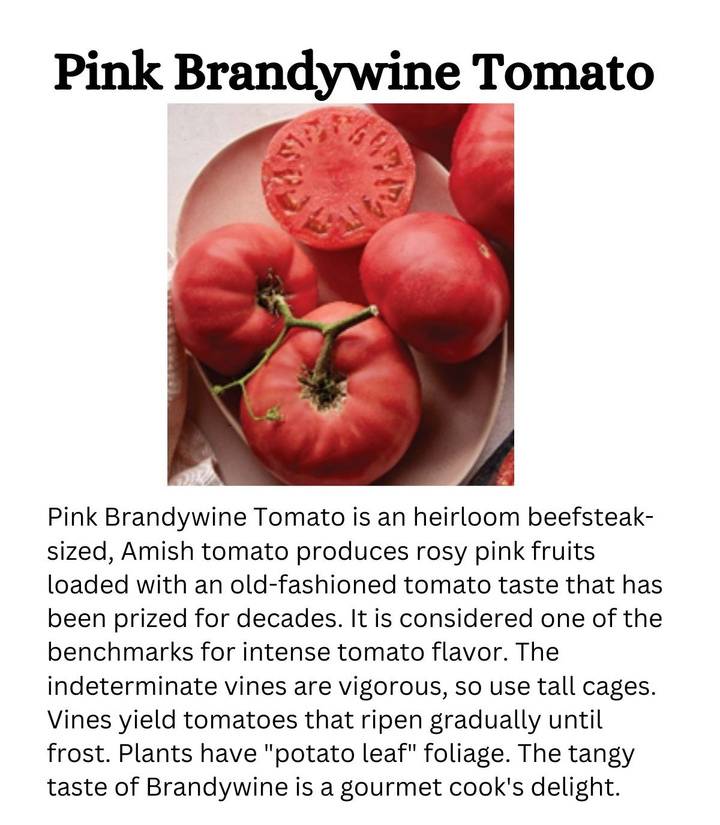
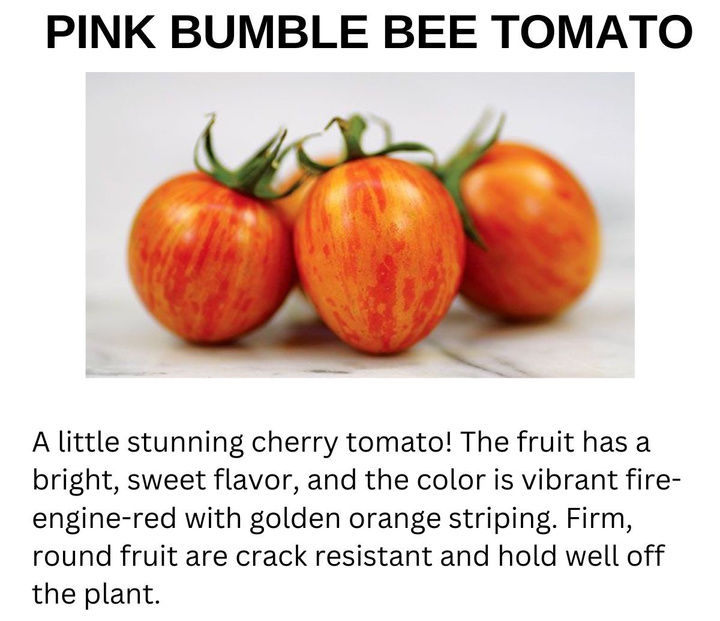
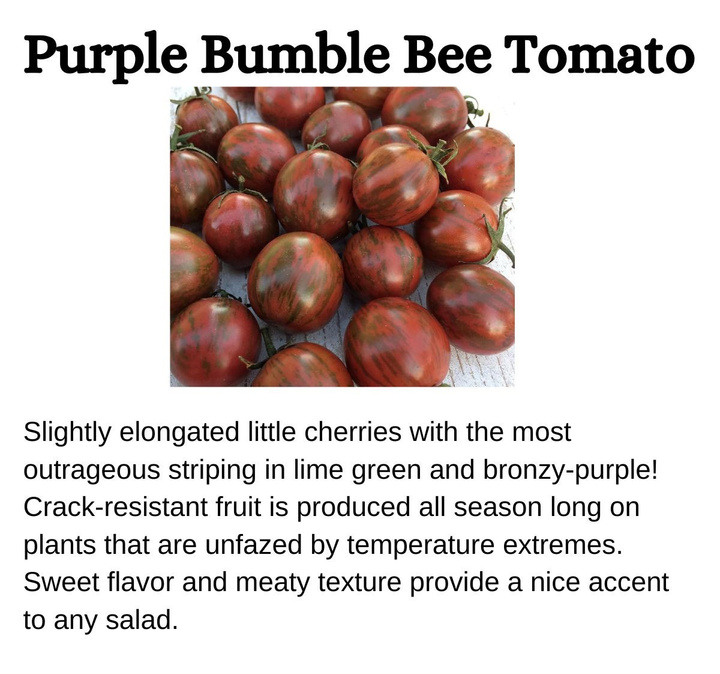
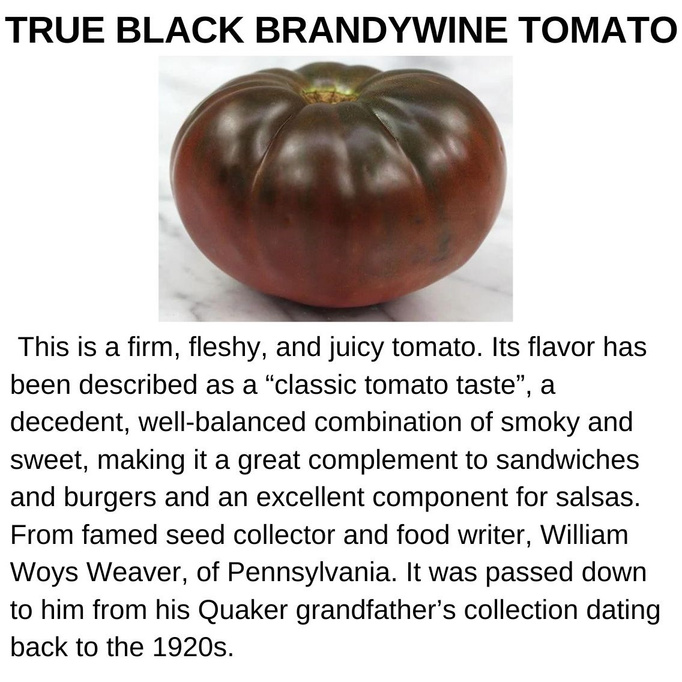
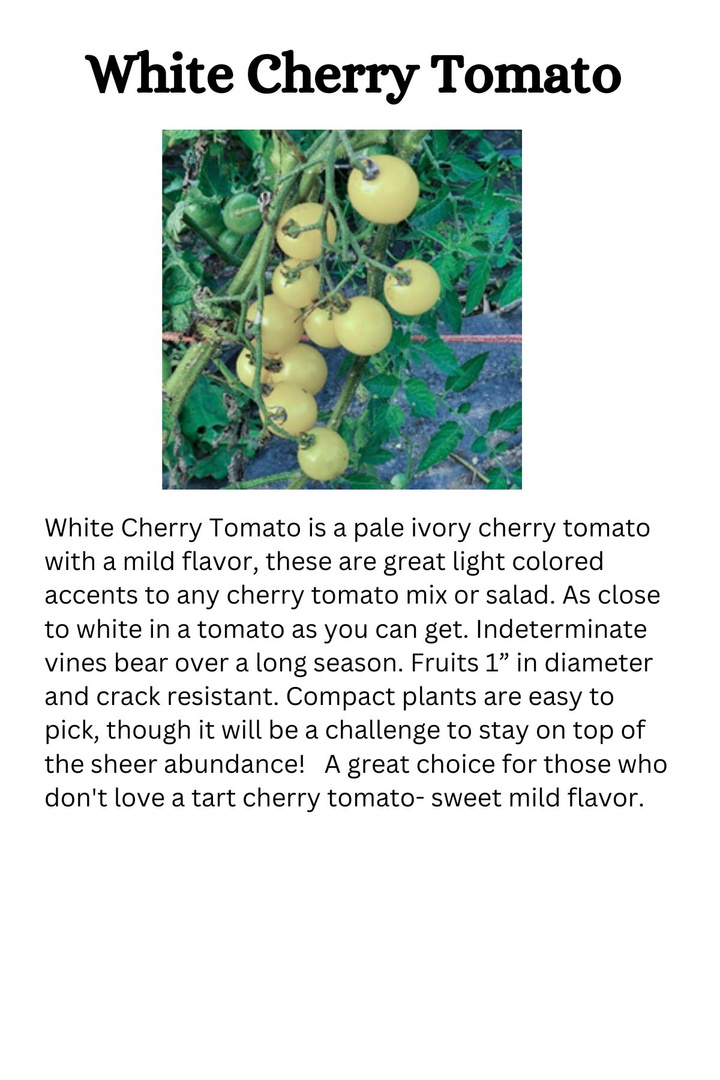
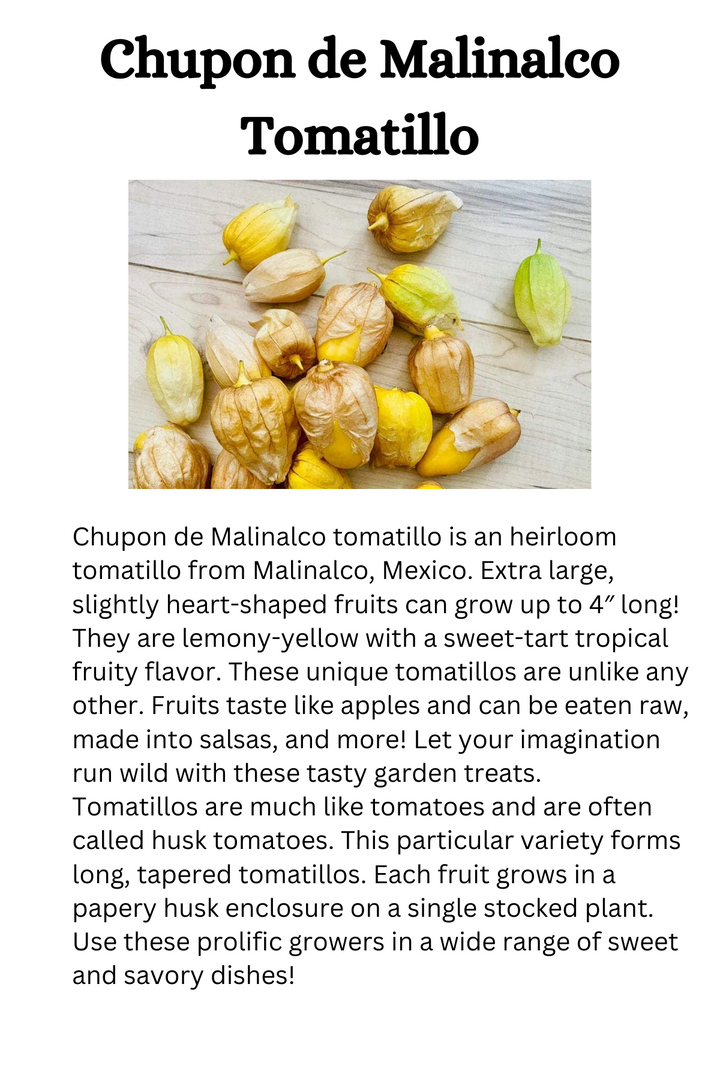
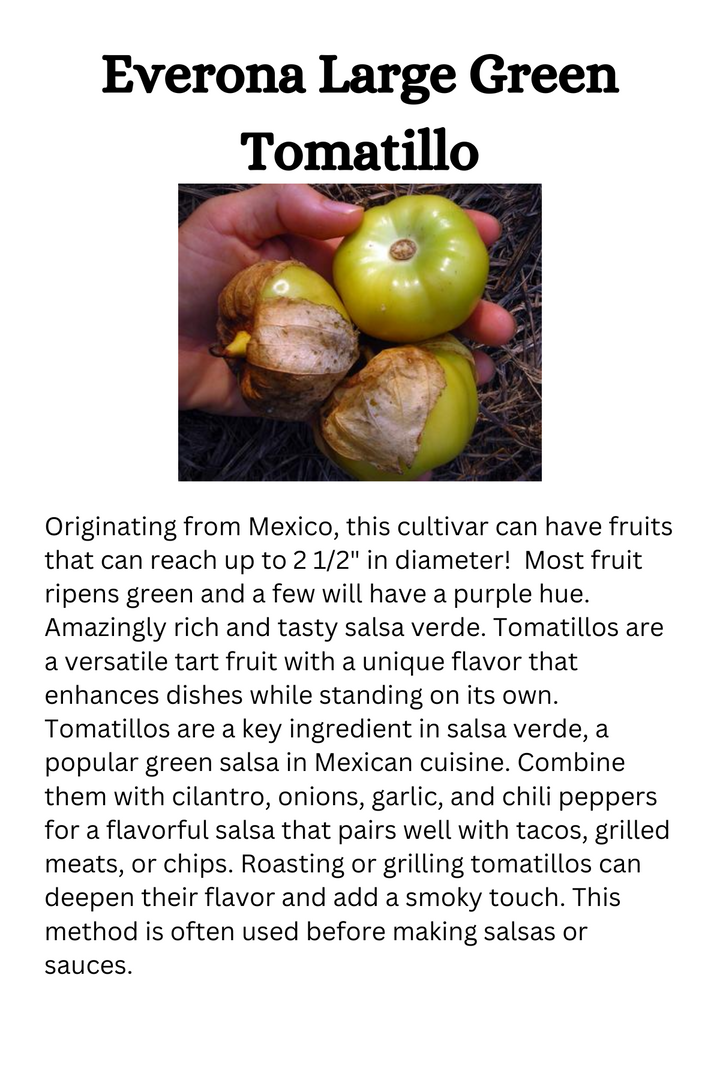
STARTER APPLE AND PEAR TREES AVAILABLE
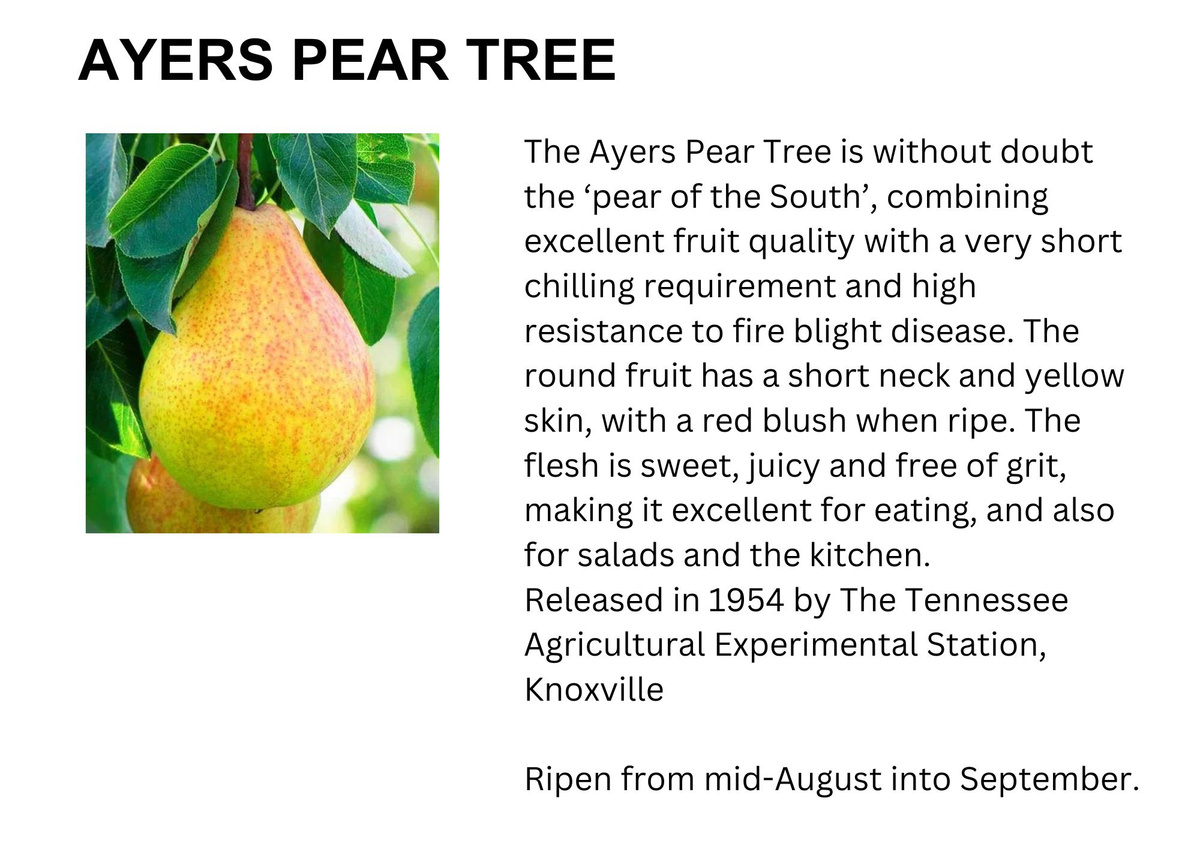
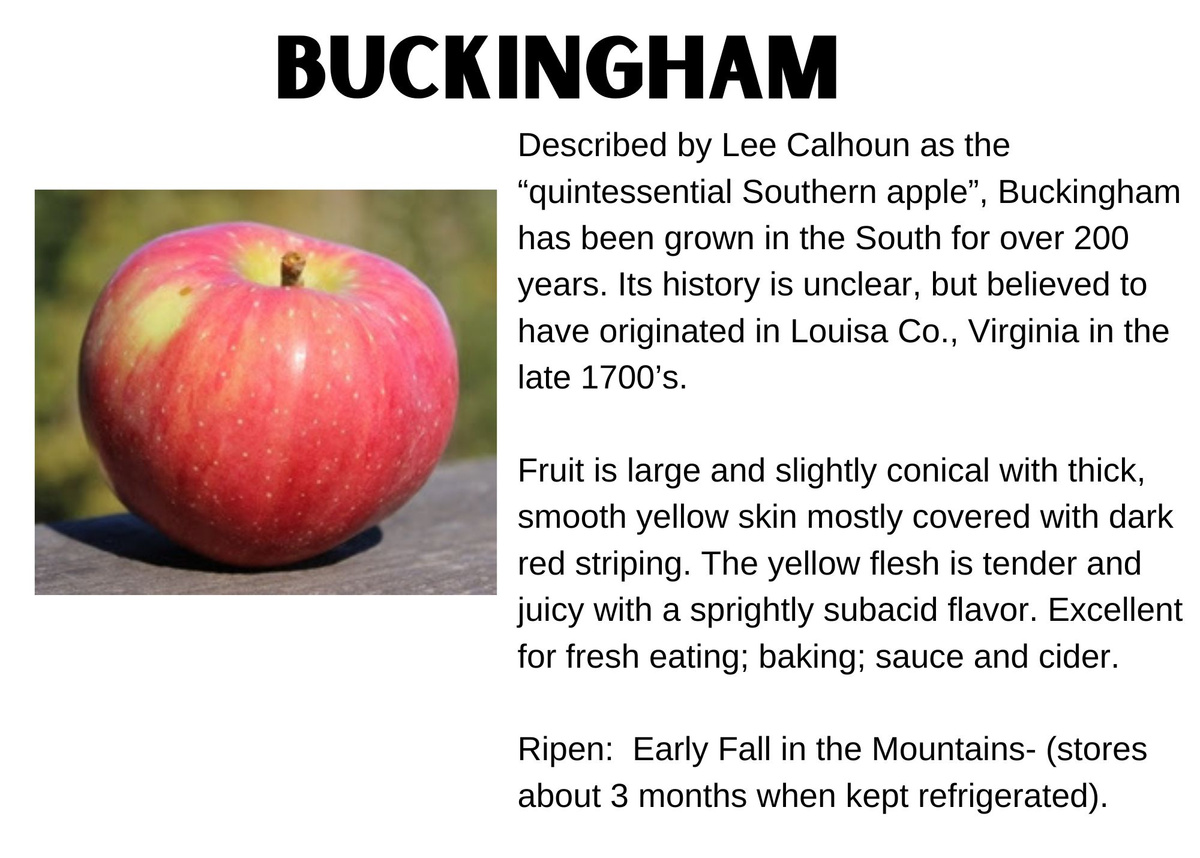
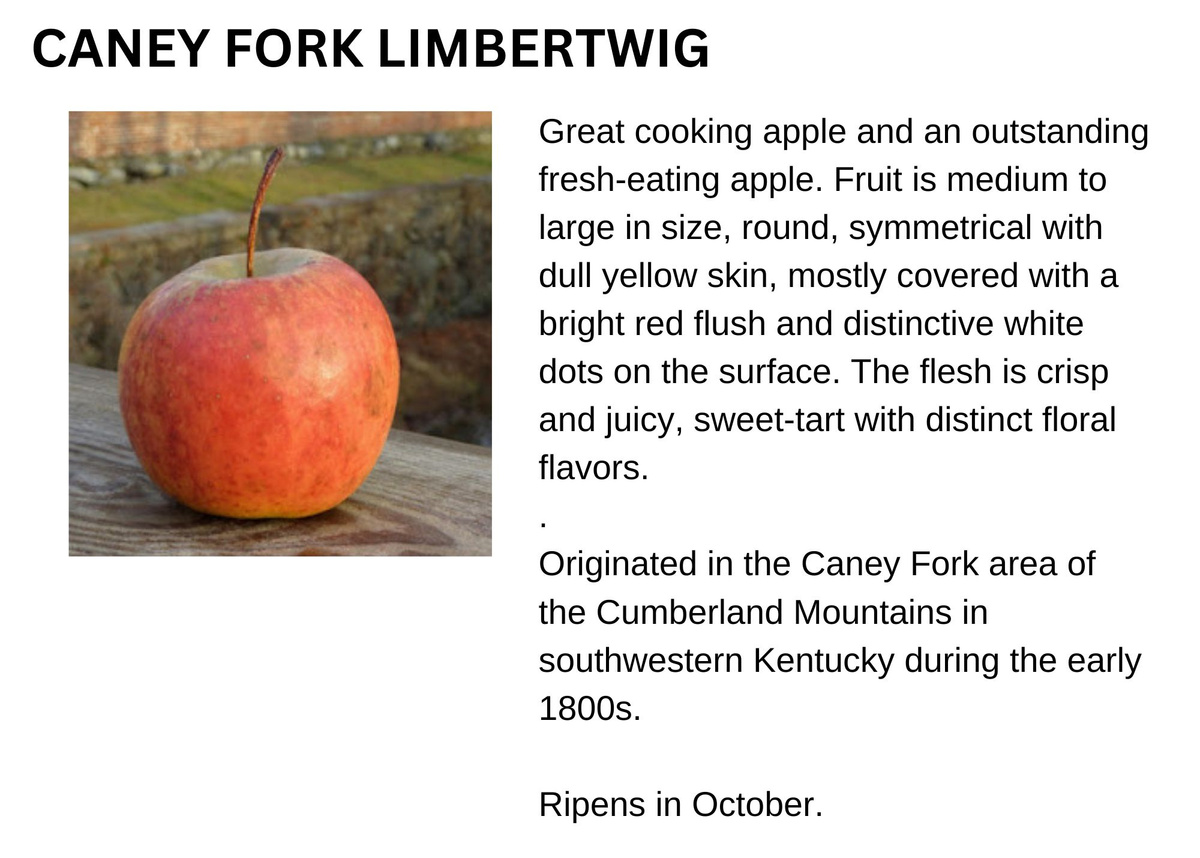
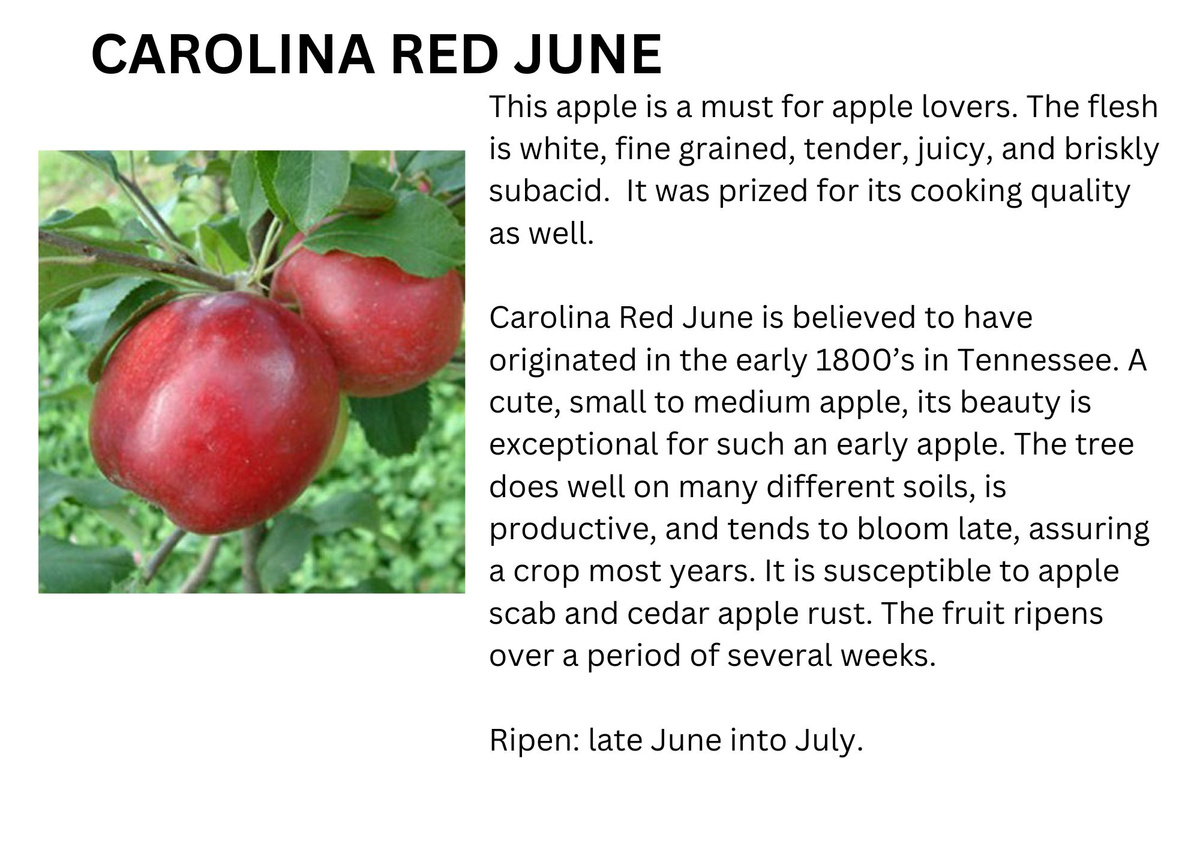
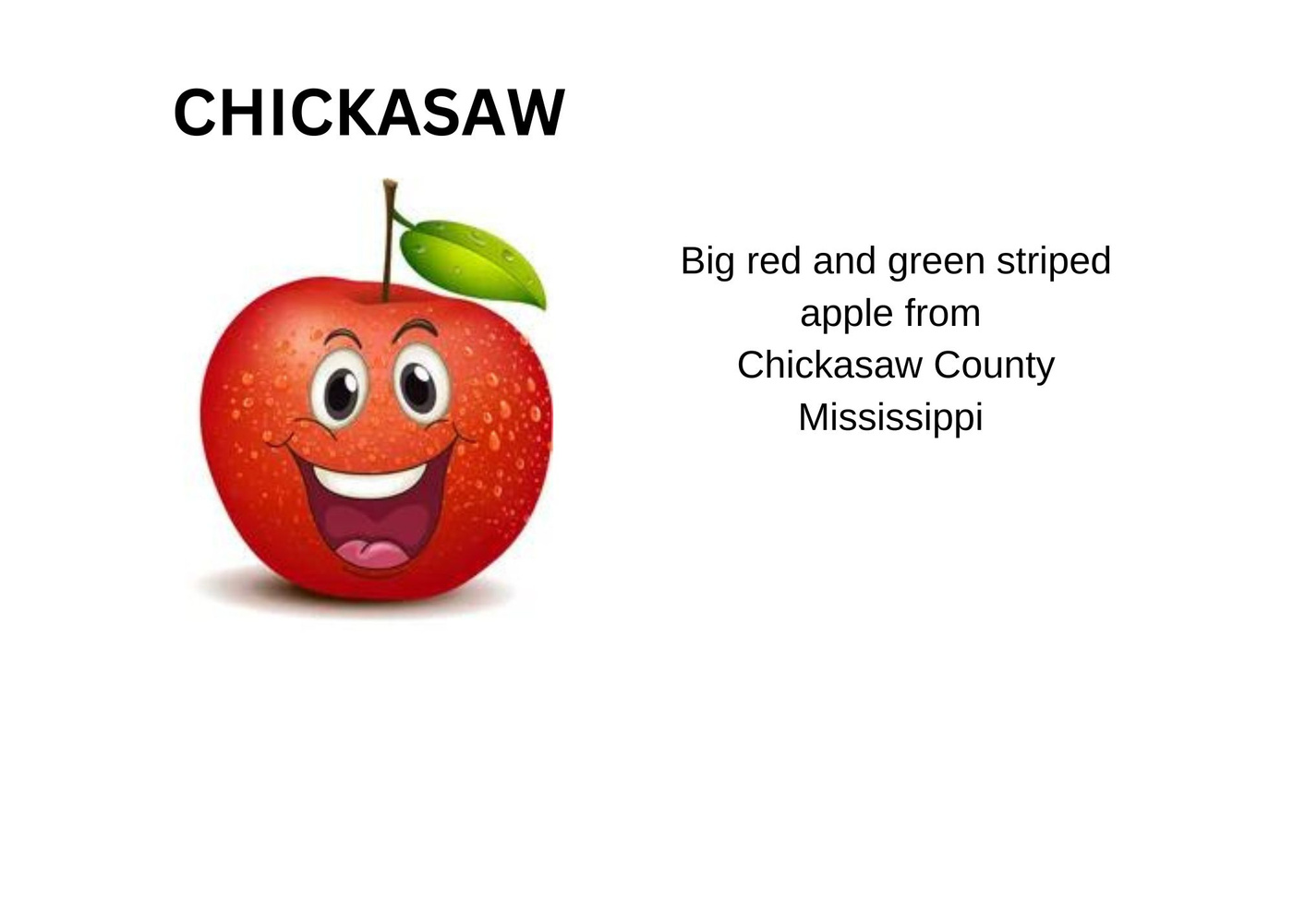
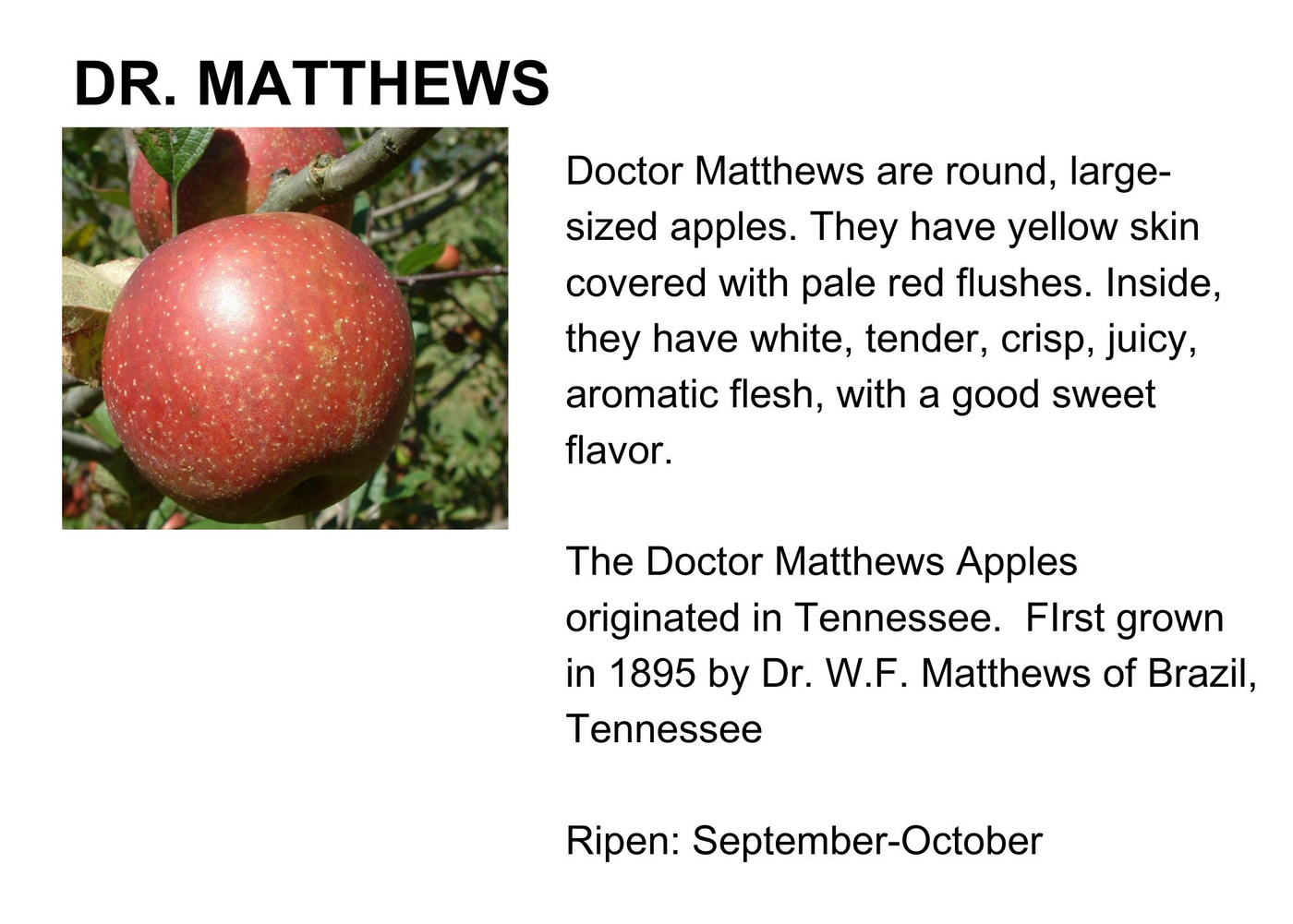
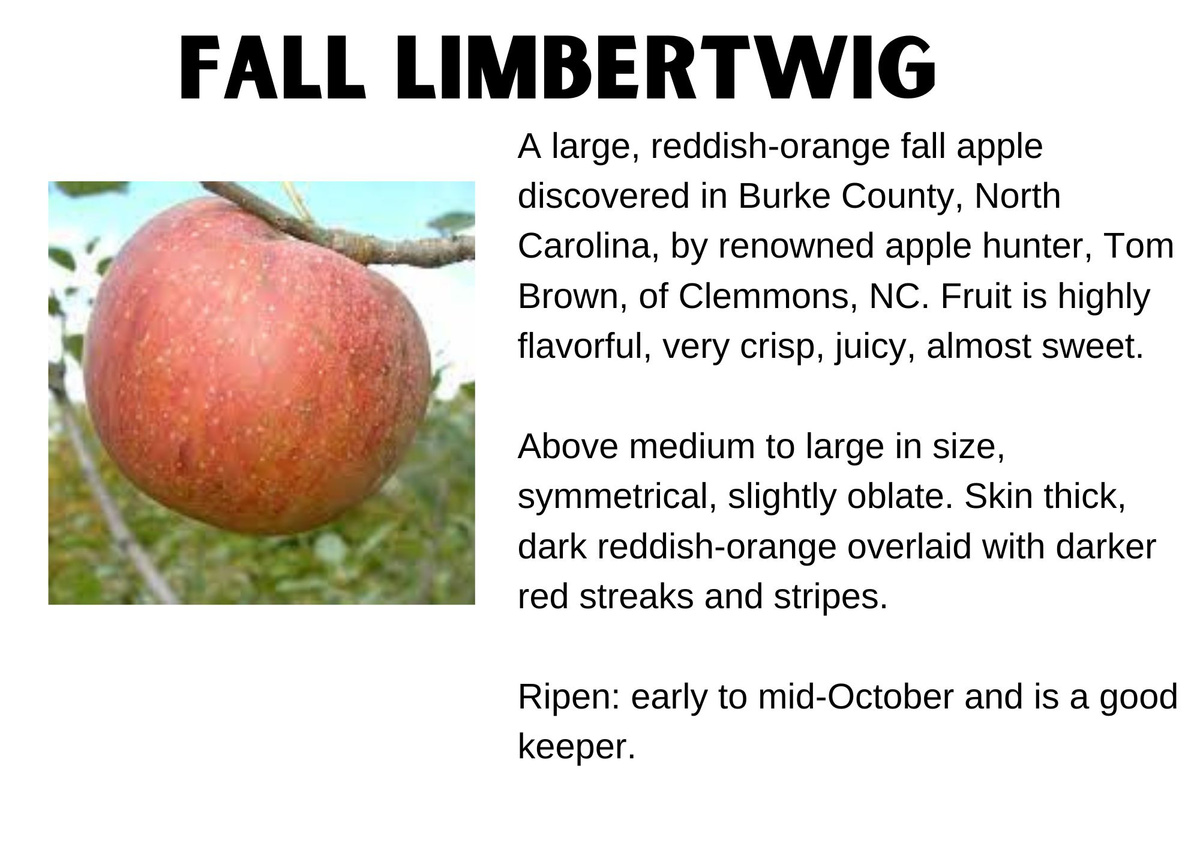
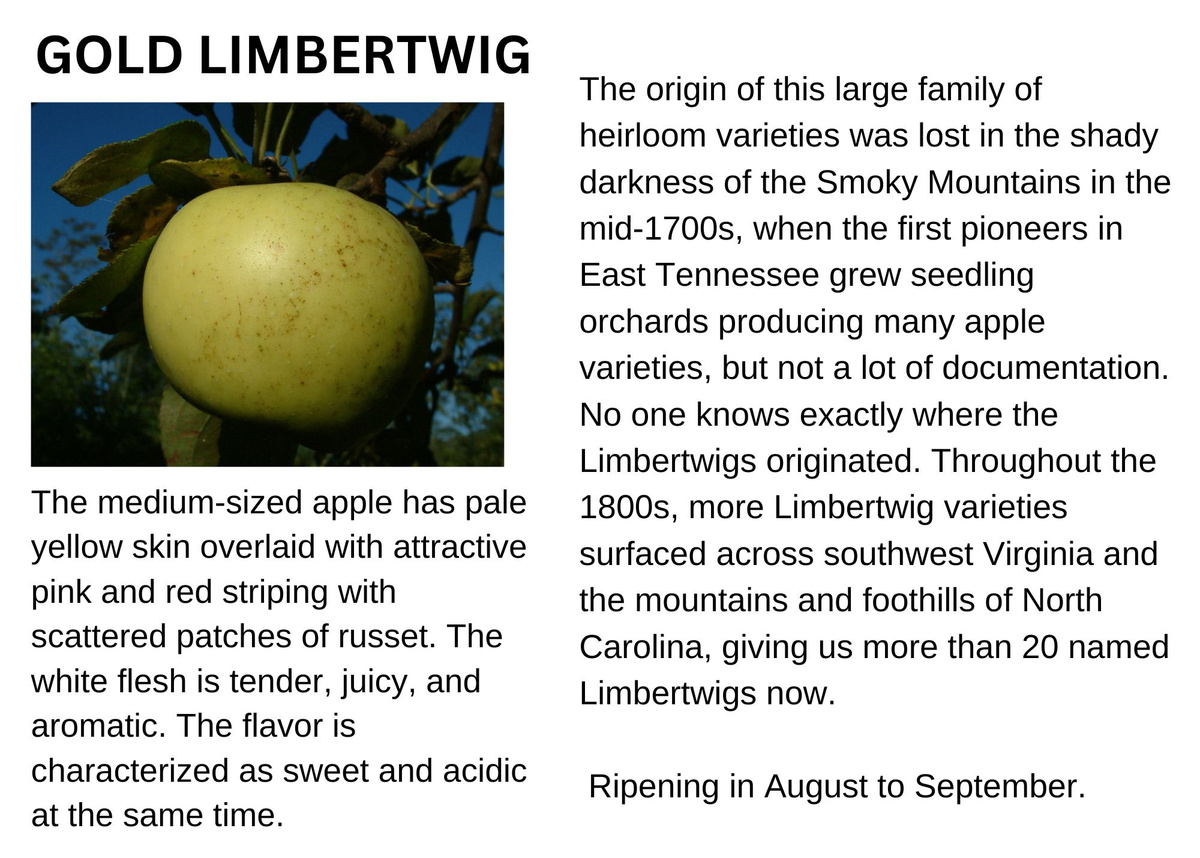
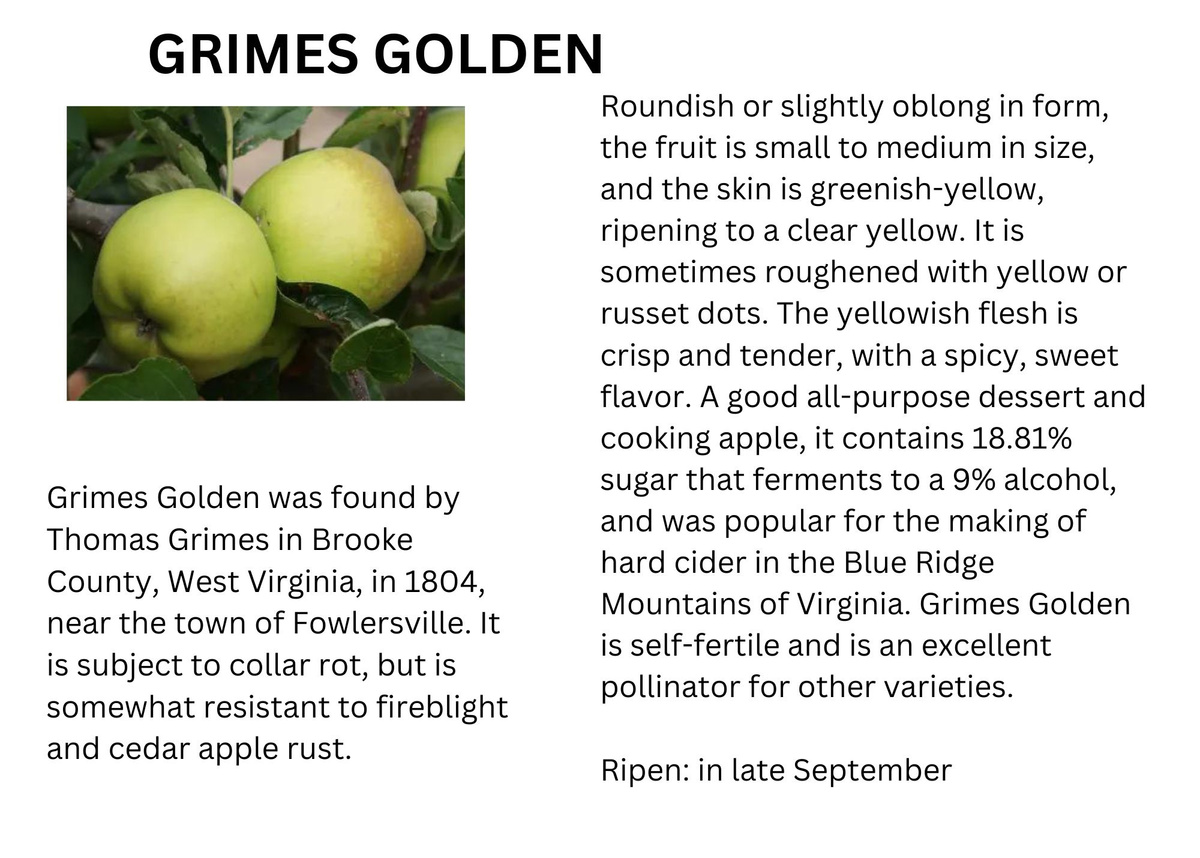
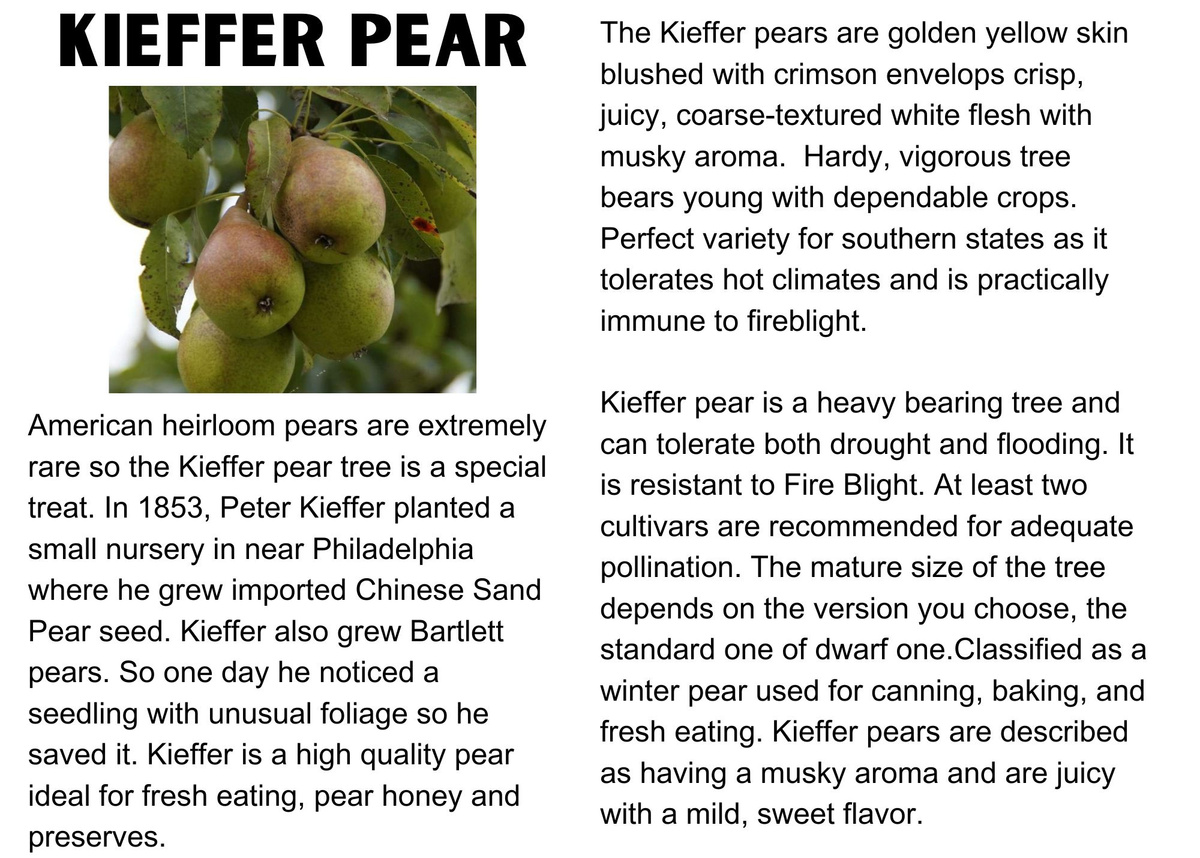
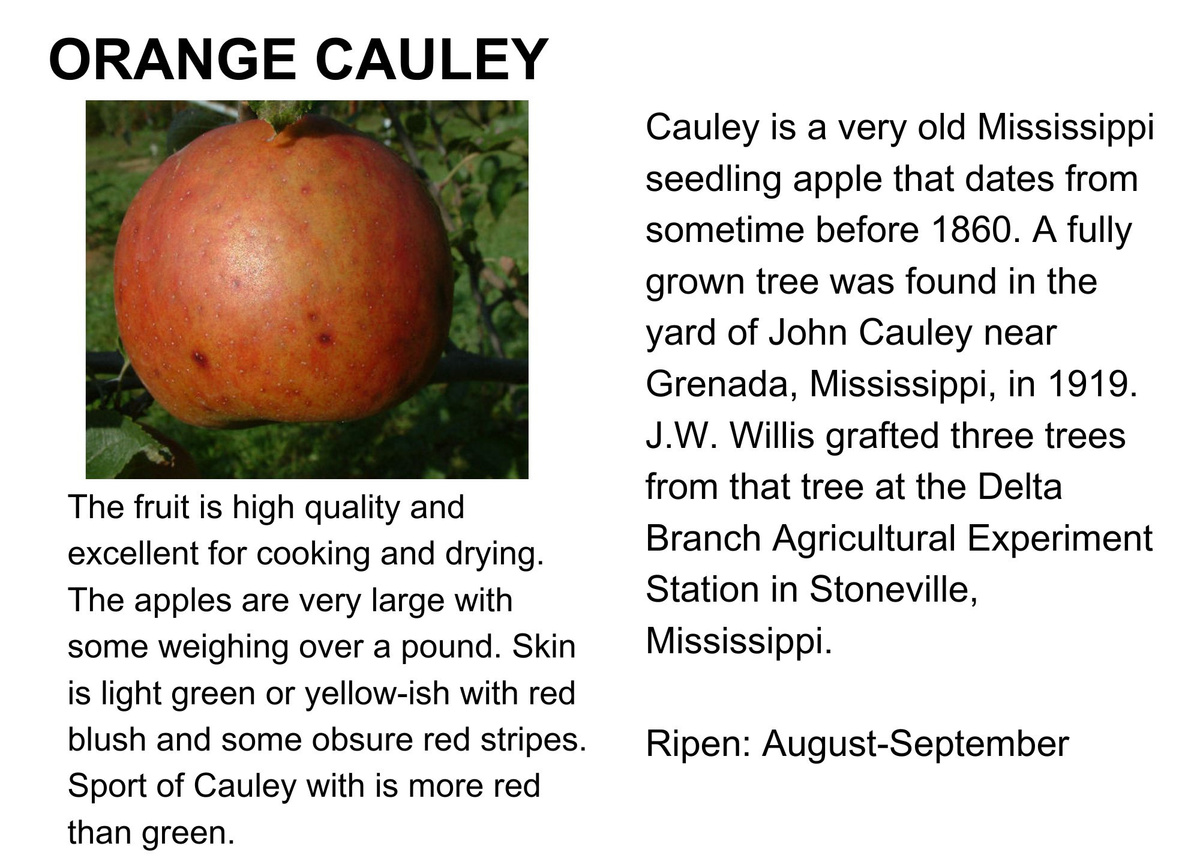
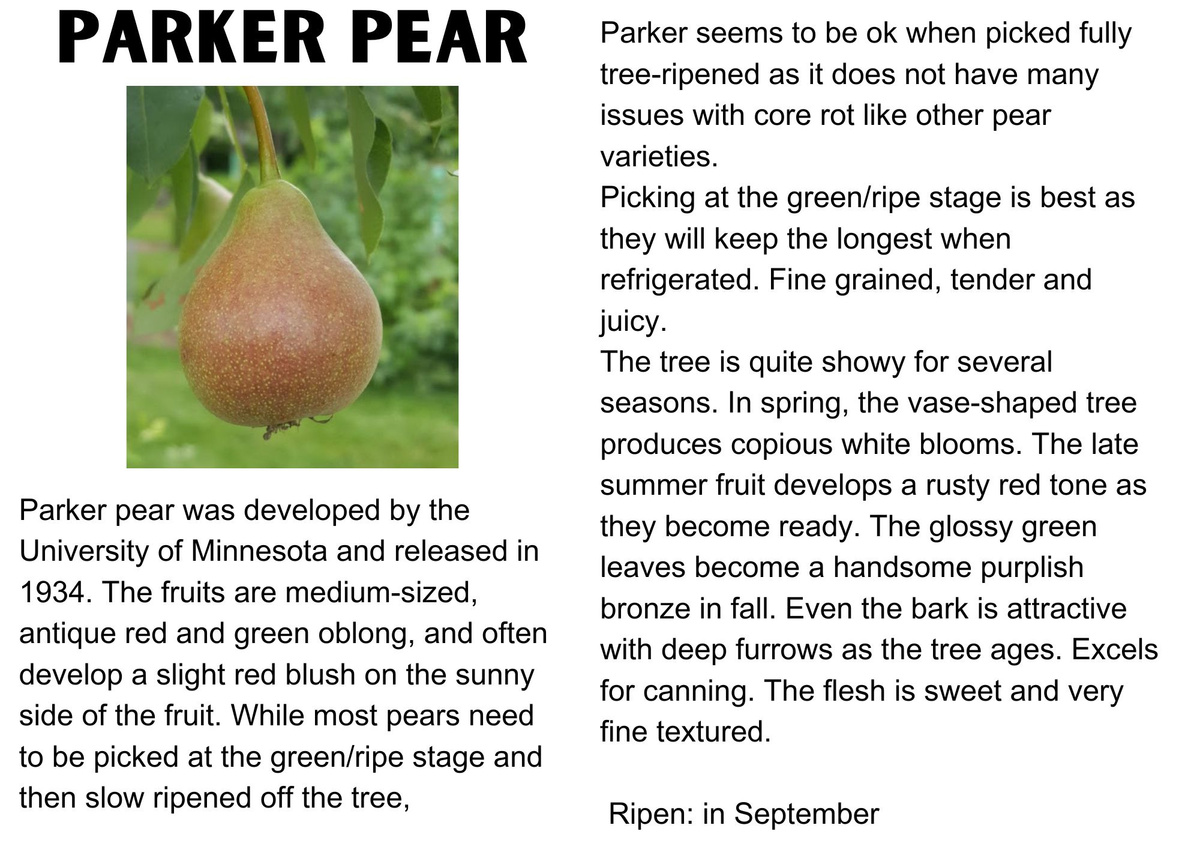
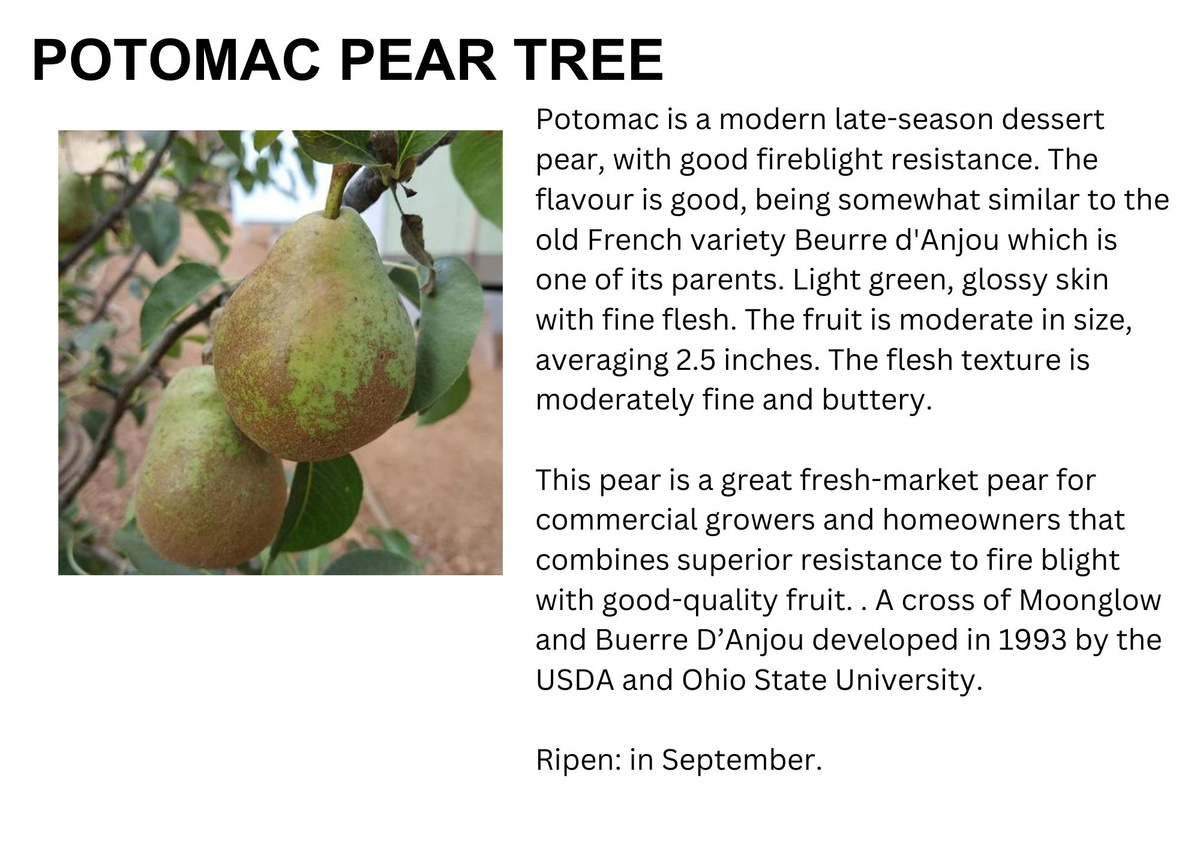
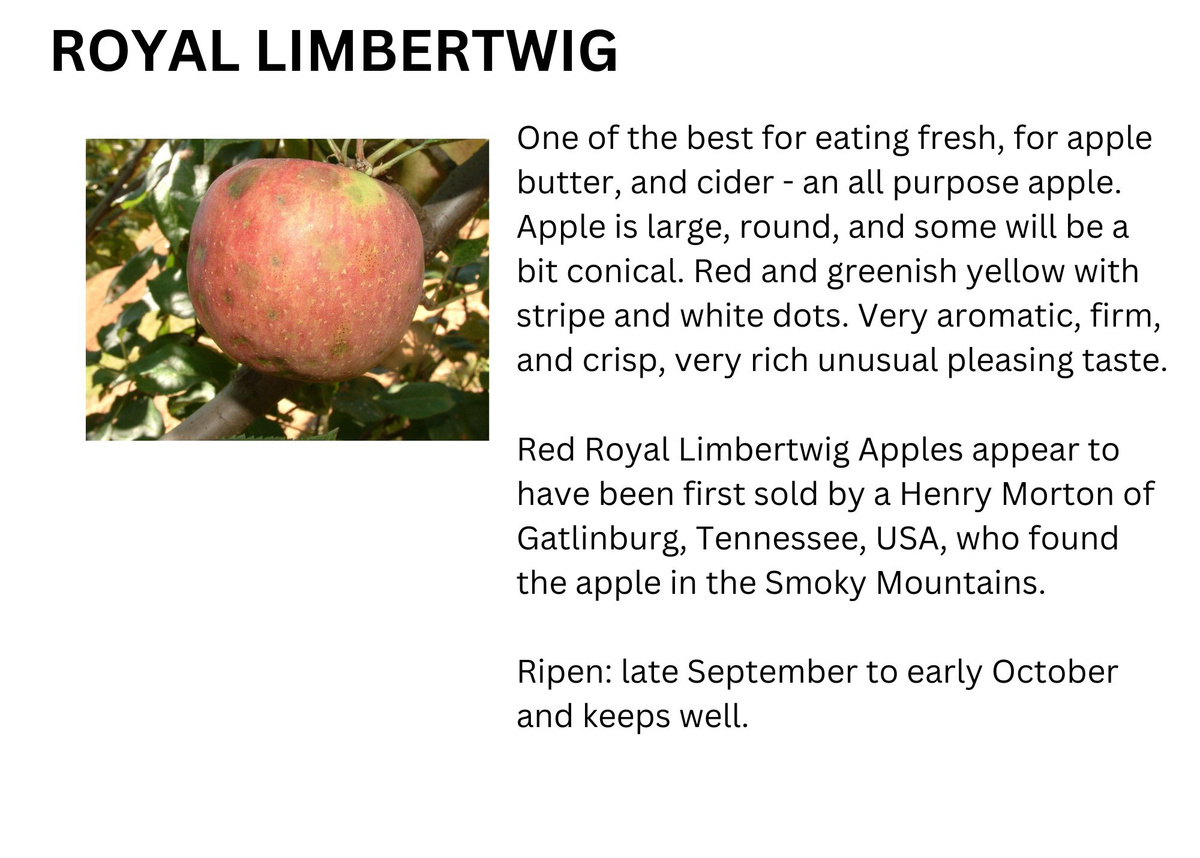
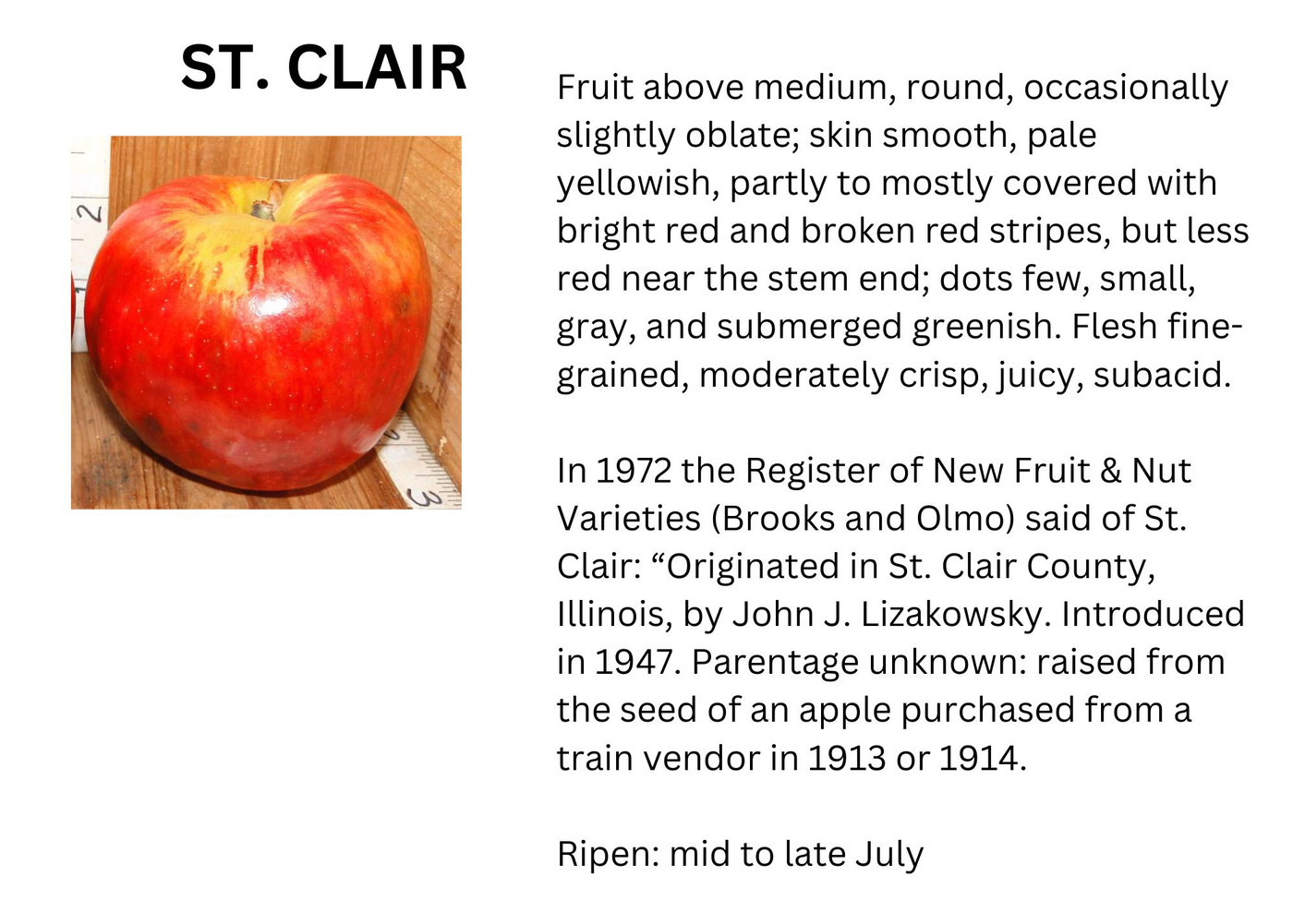
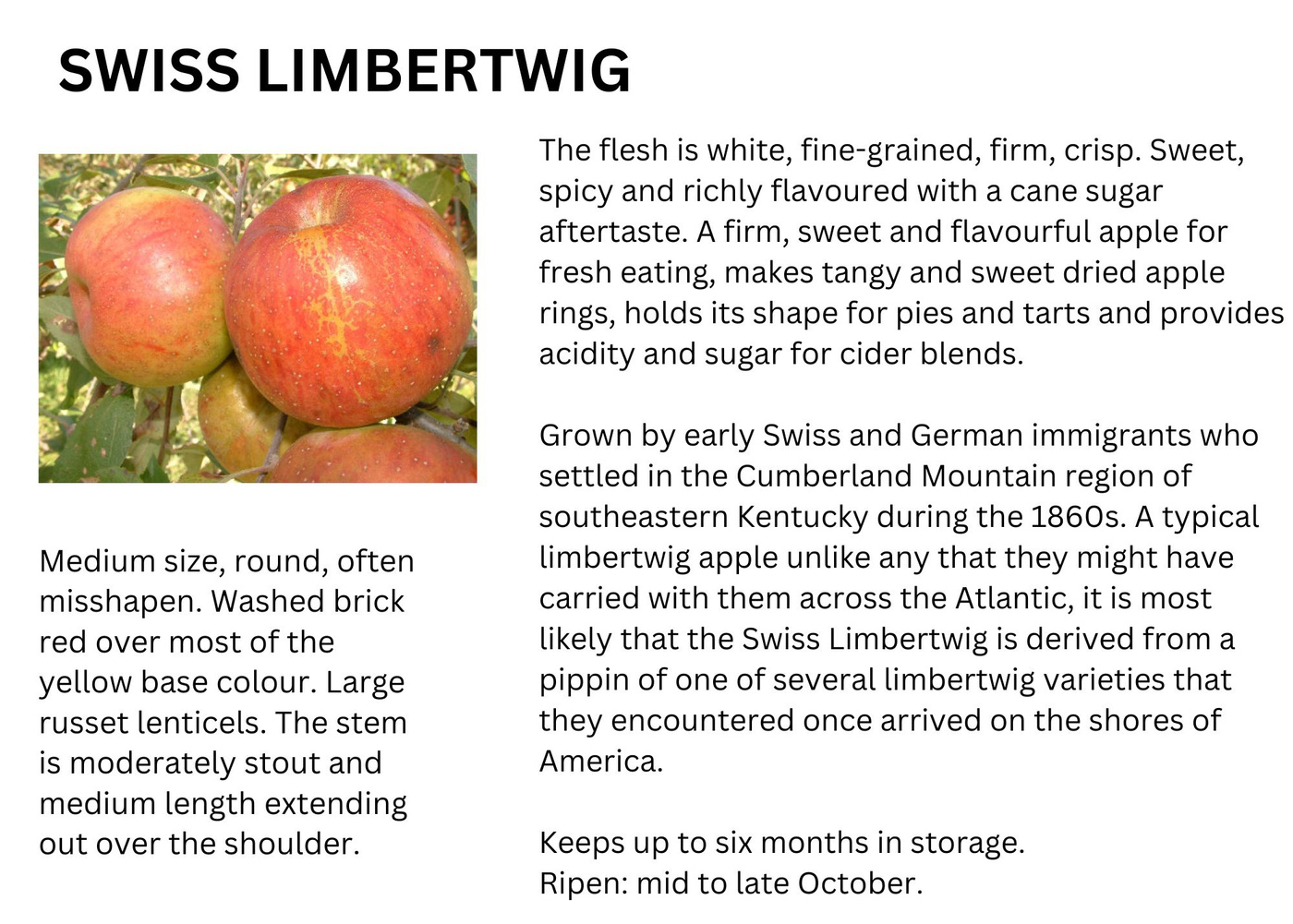
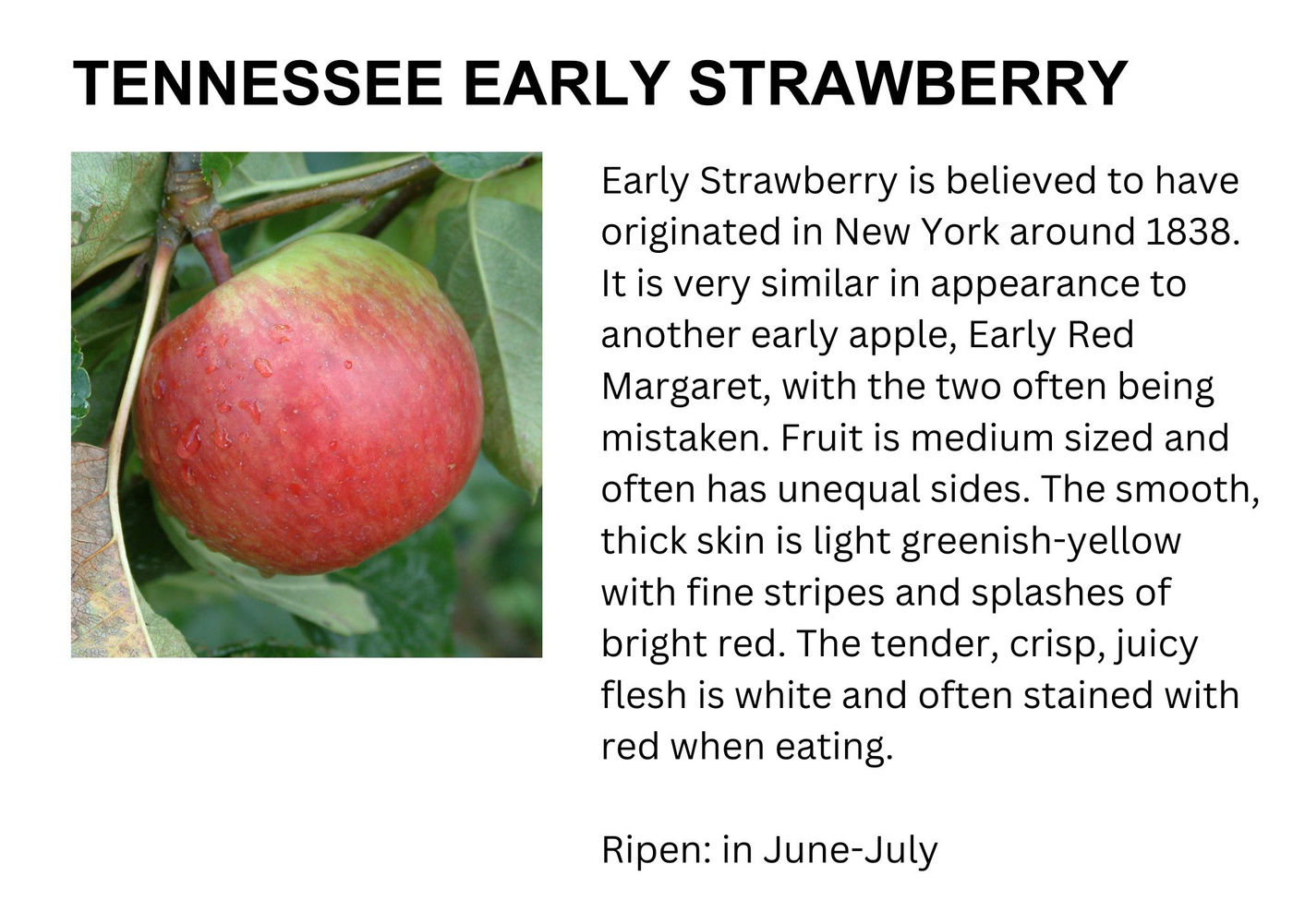
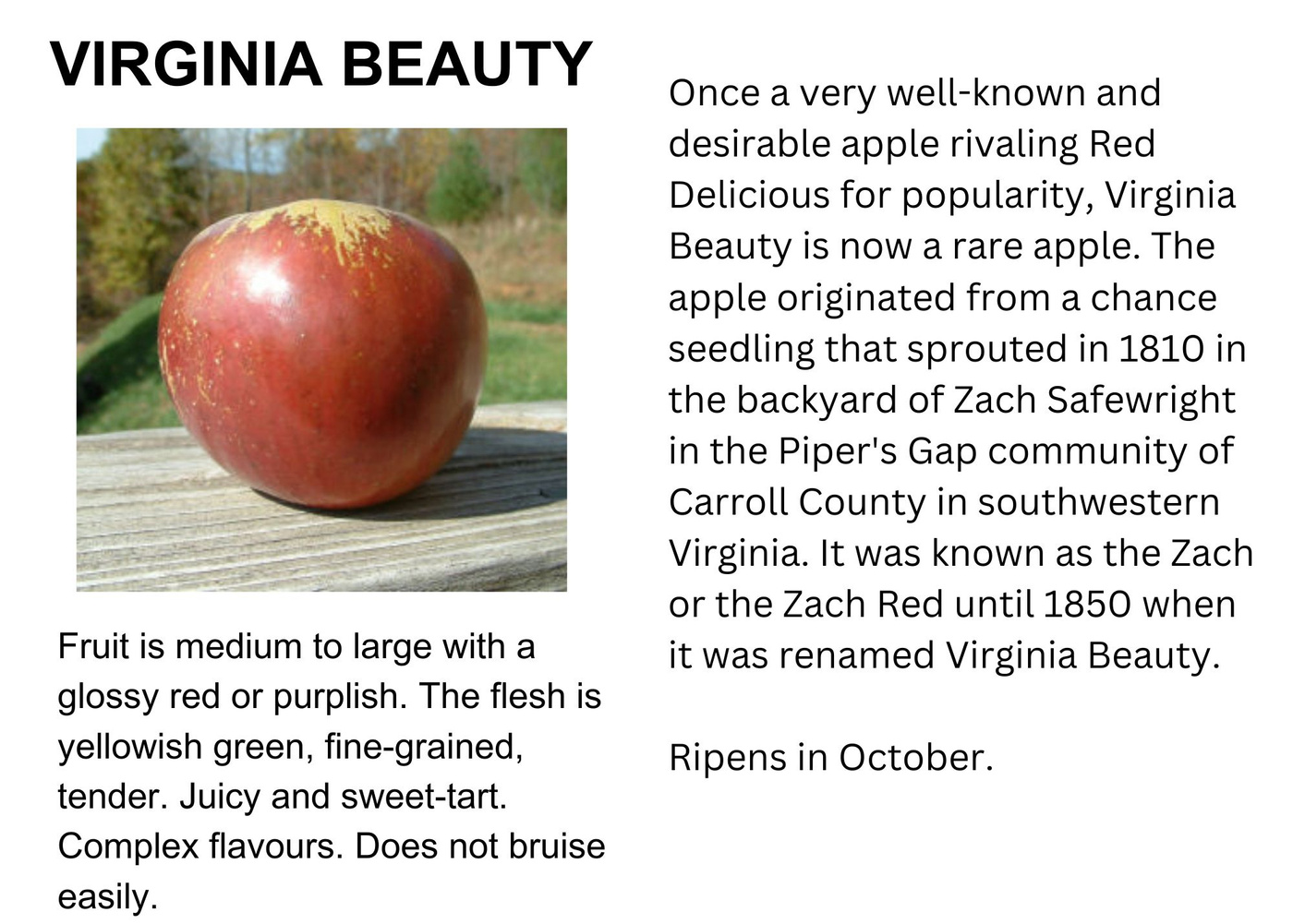
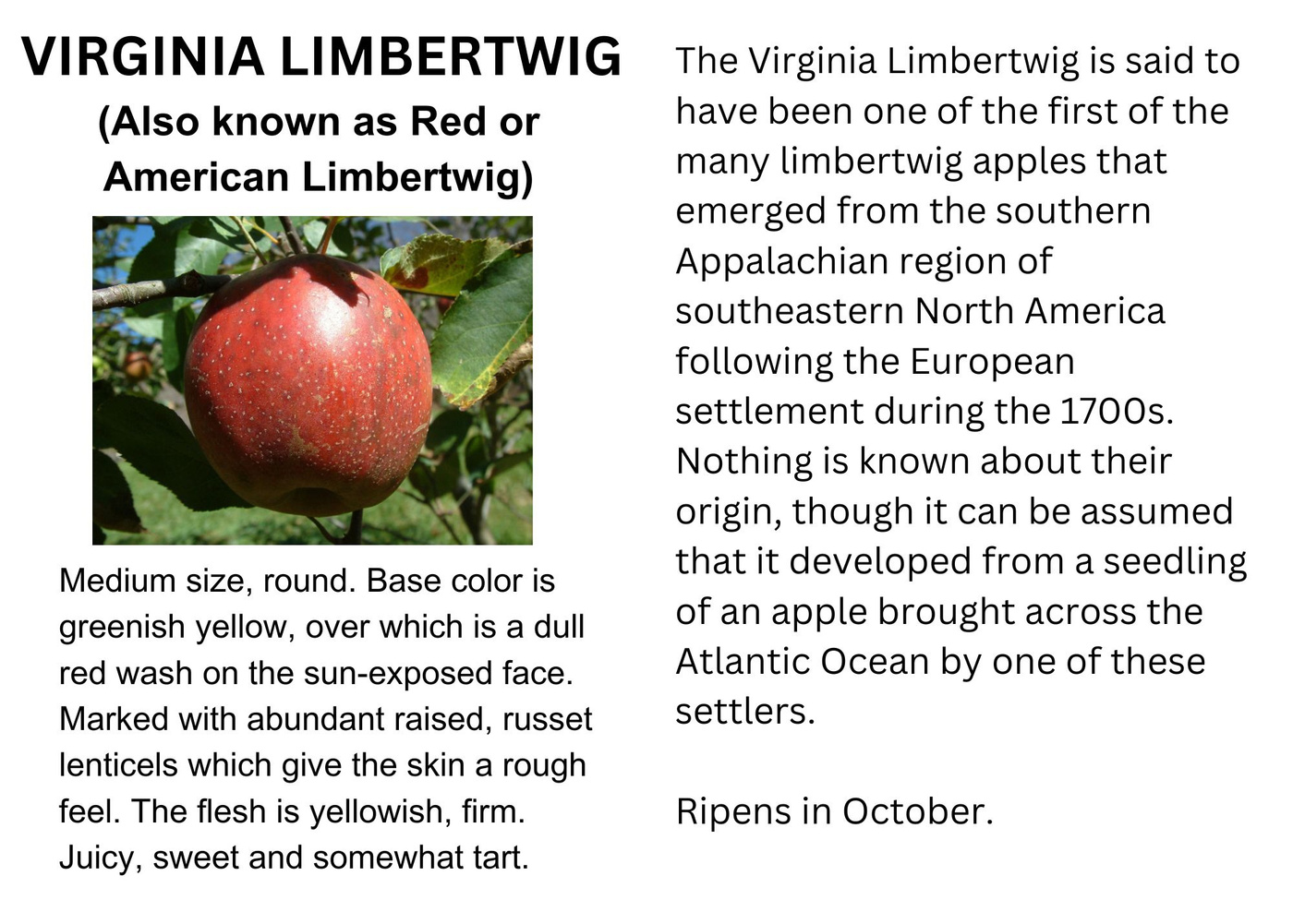
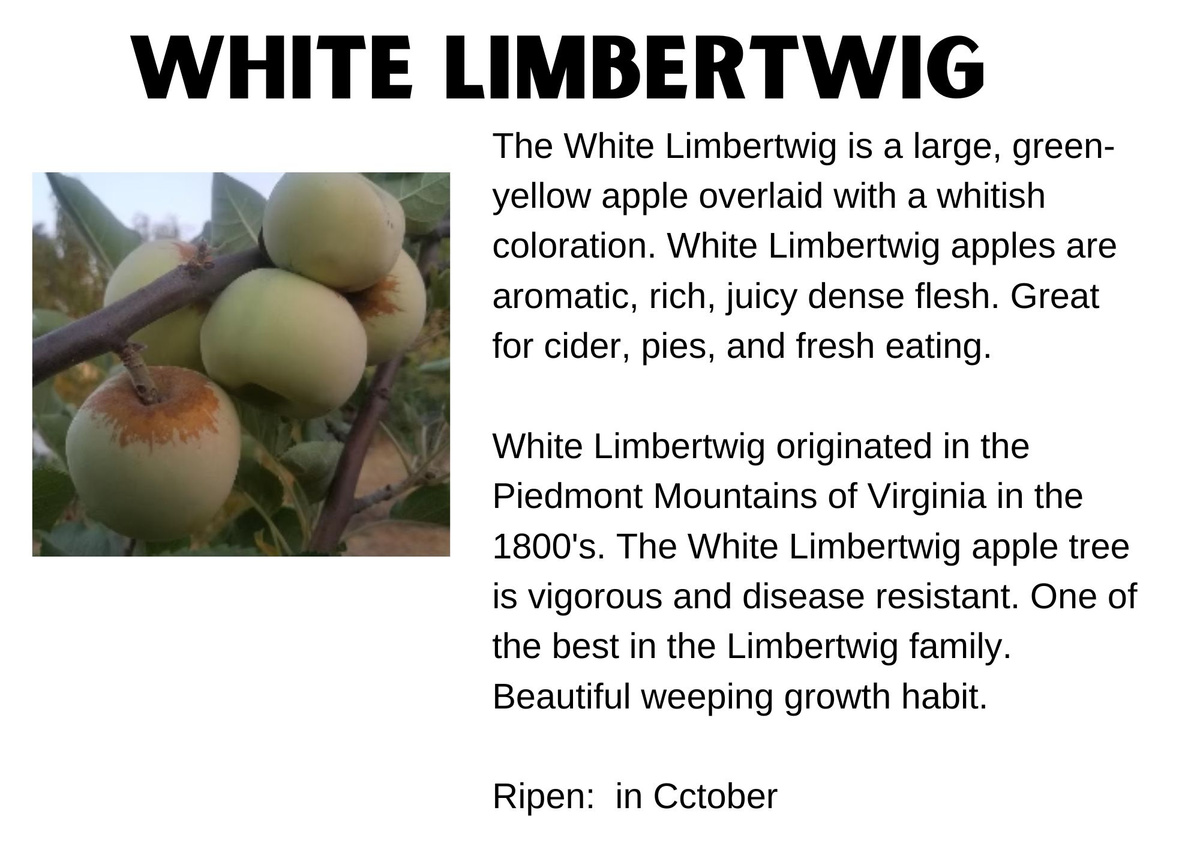
ROSES AVAILABLE
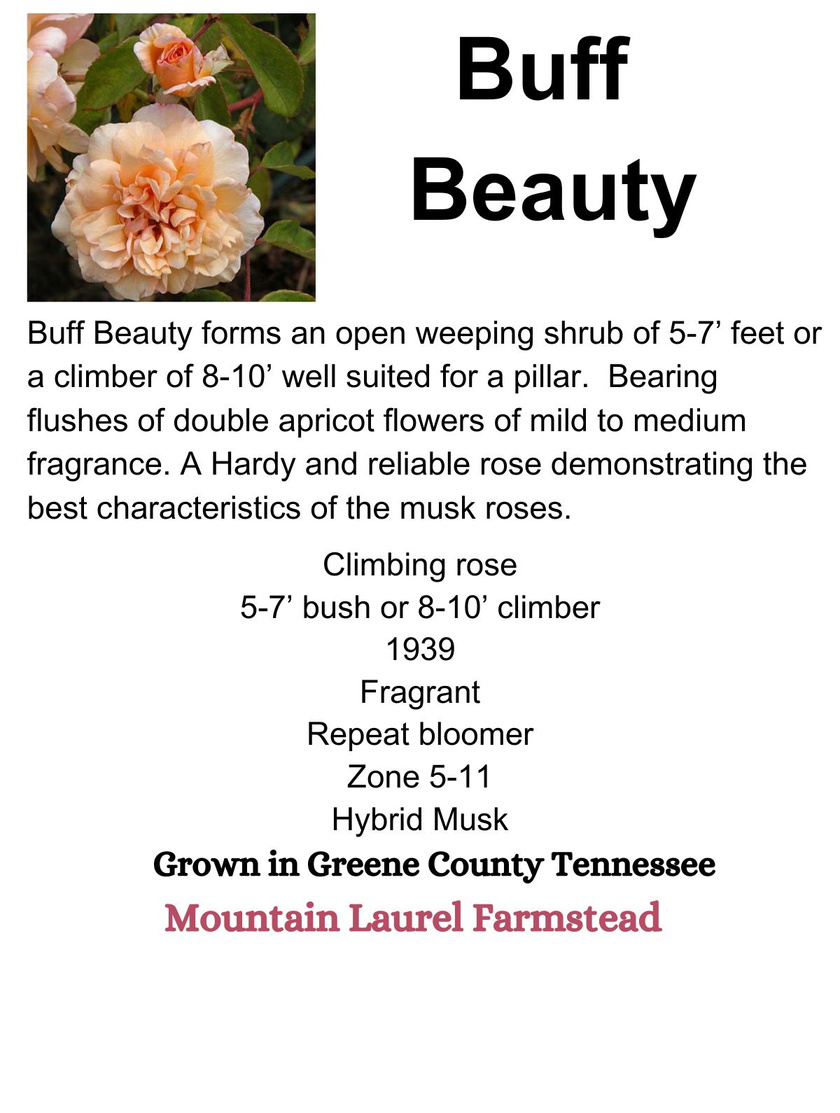

In 2021, we founded Mountain Laurel Makers. Selling handcrafted goods for the kitchen and home.
Now we have expanded to growing plants an produce. We feel it's the perfect fit.
Mountain Laurel Farmstead
East Tennessee
